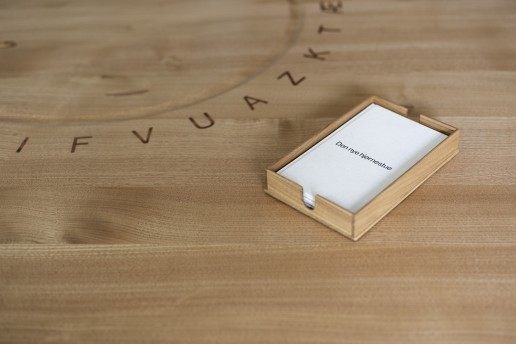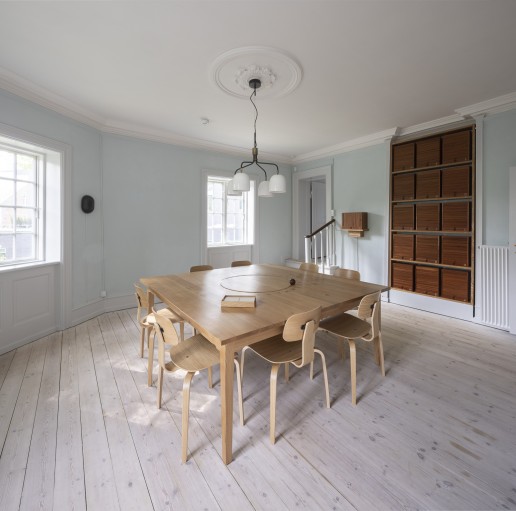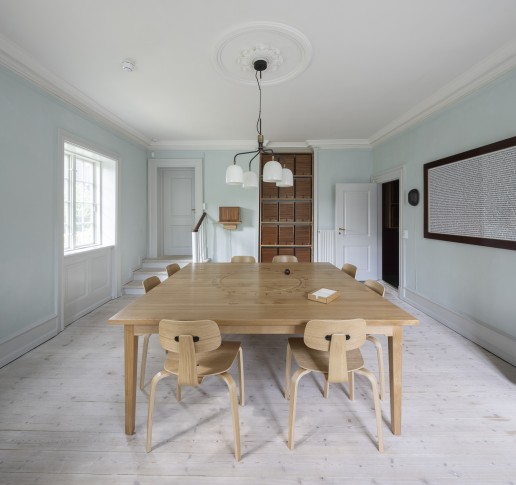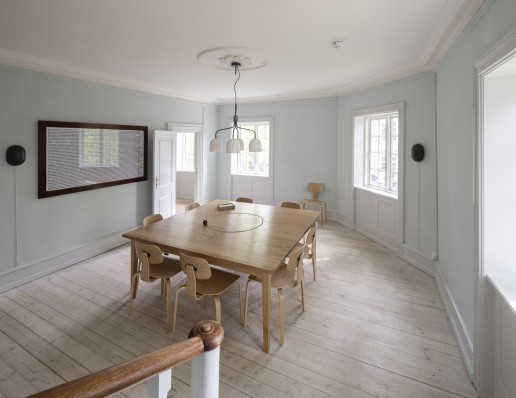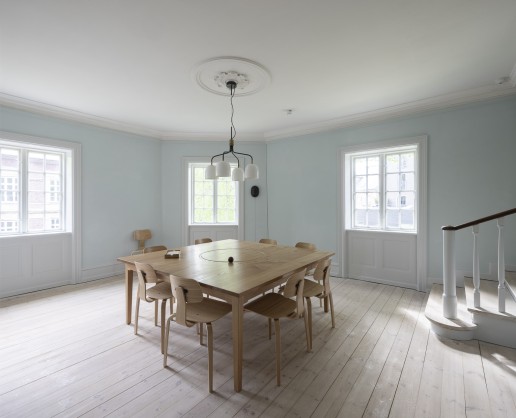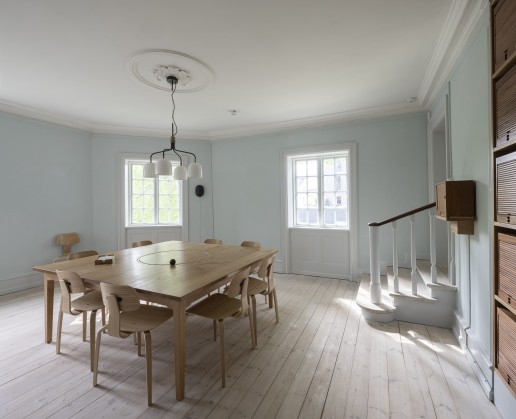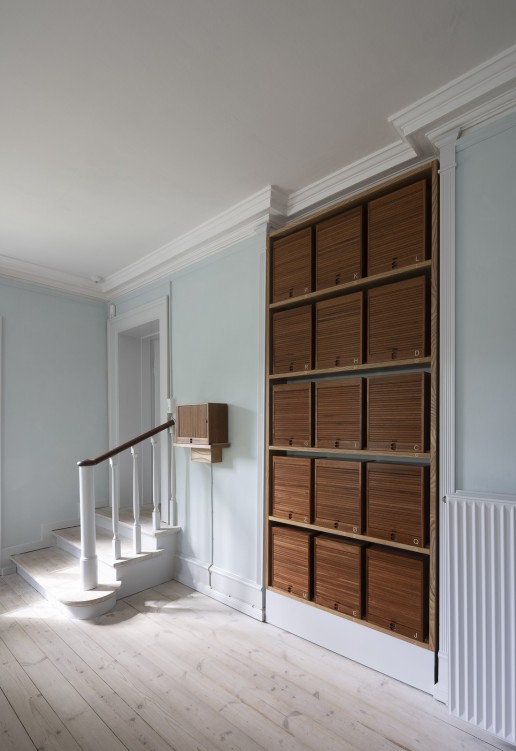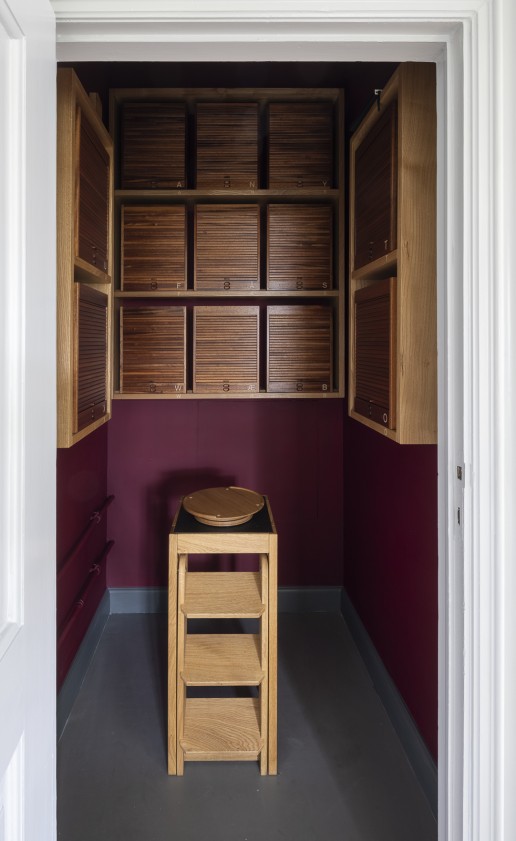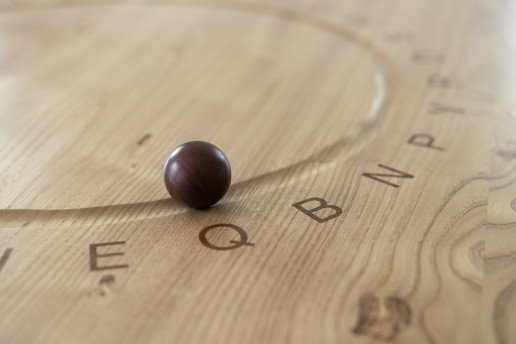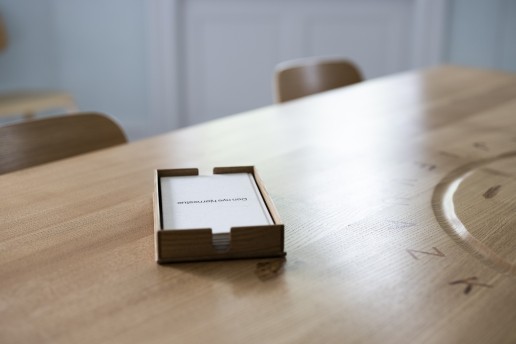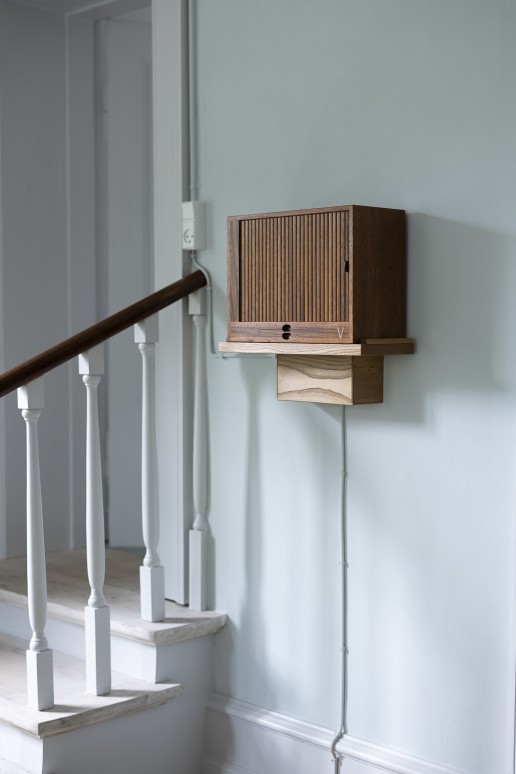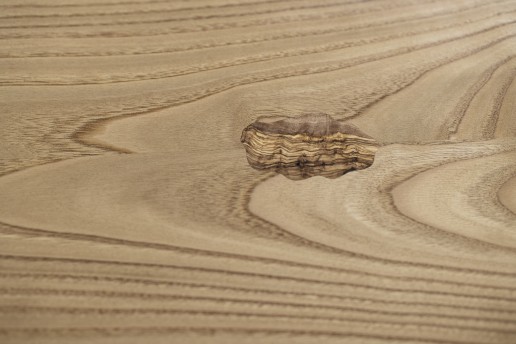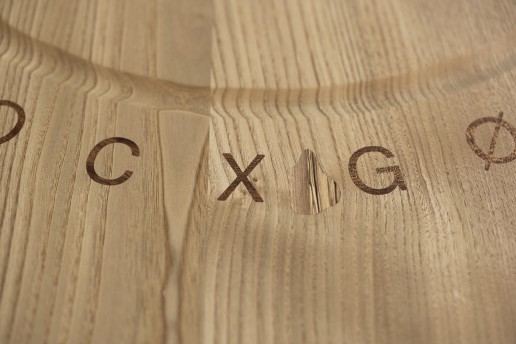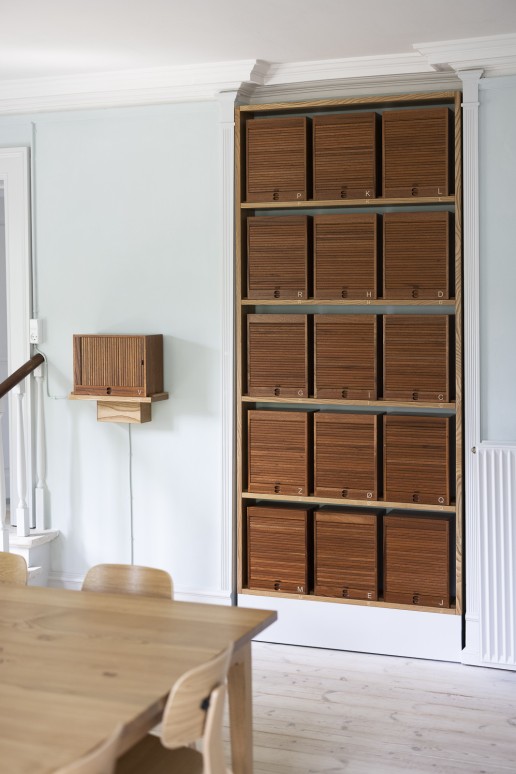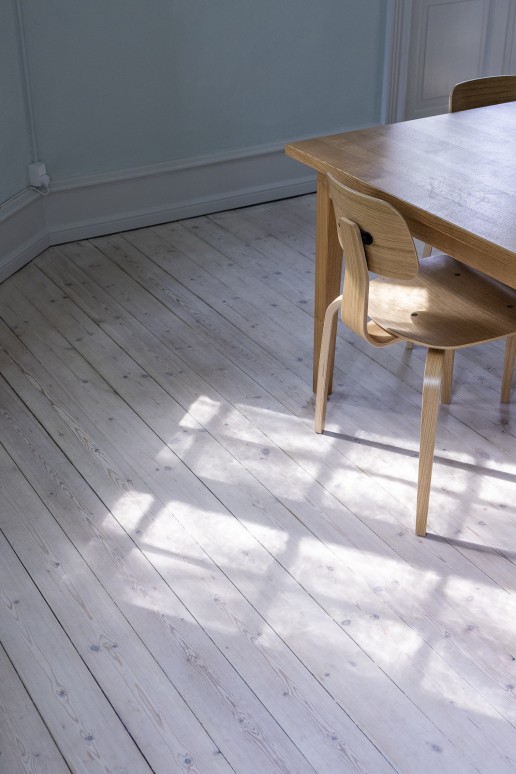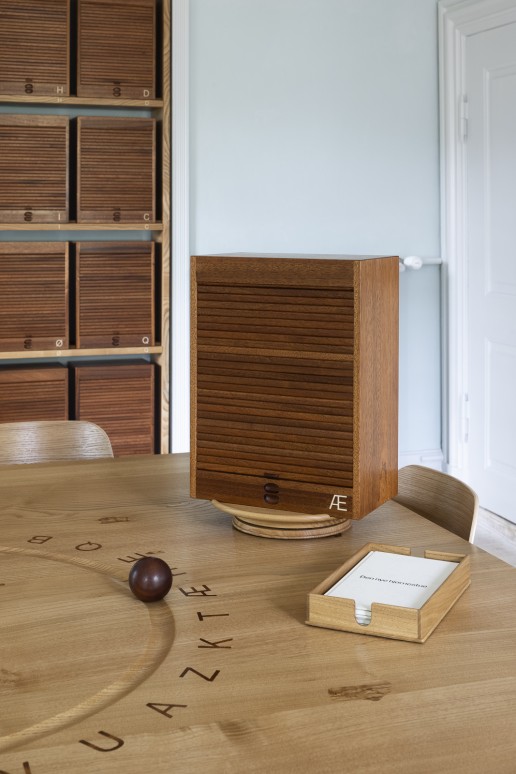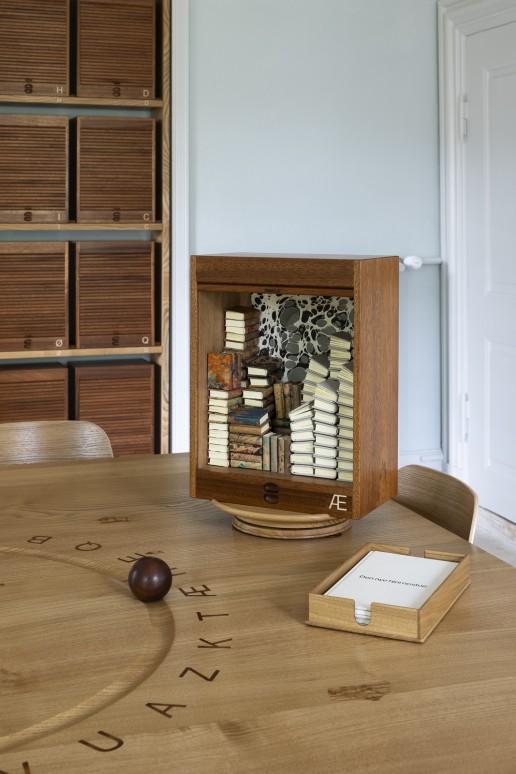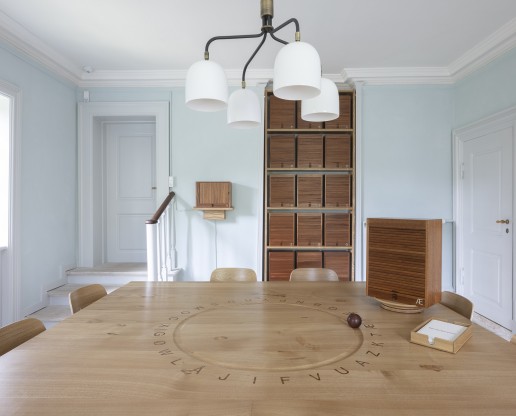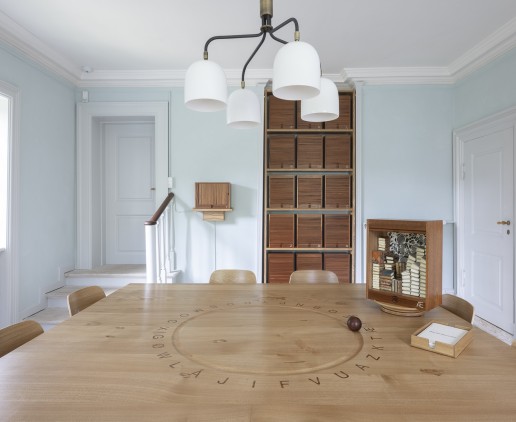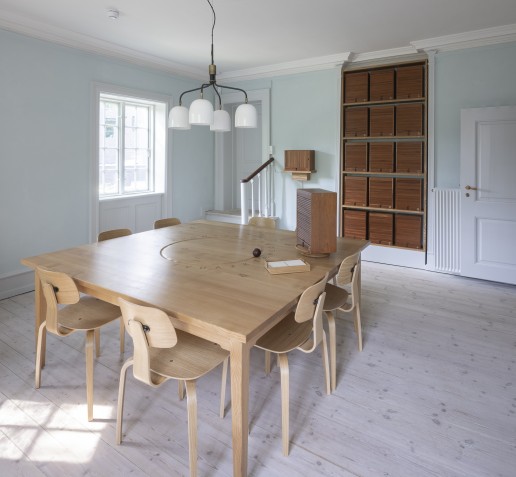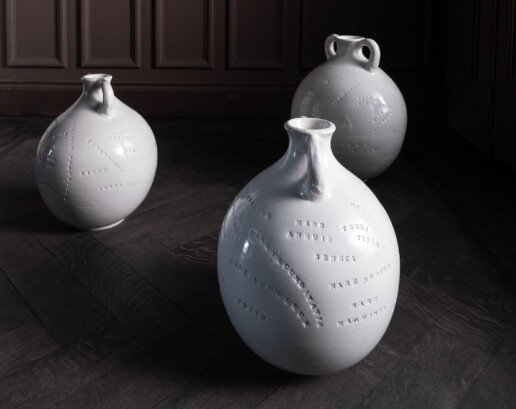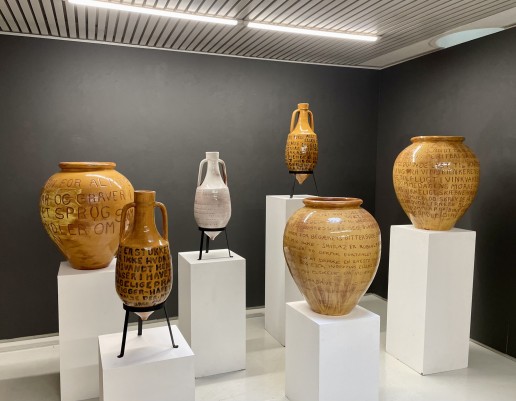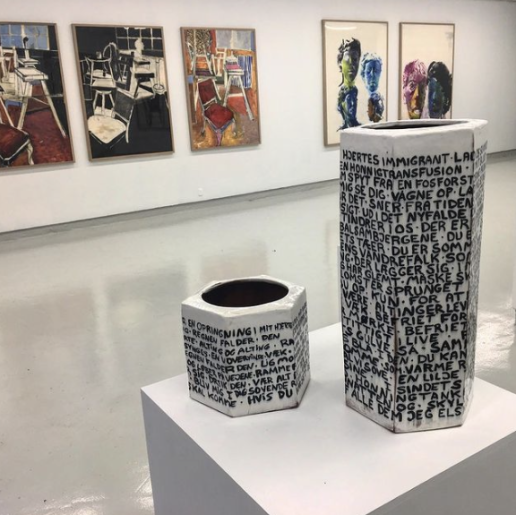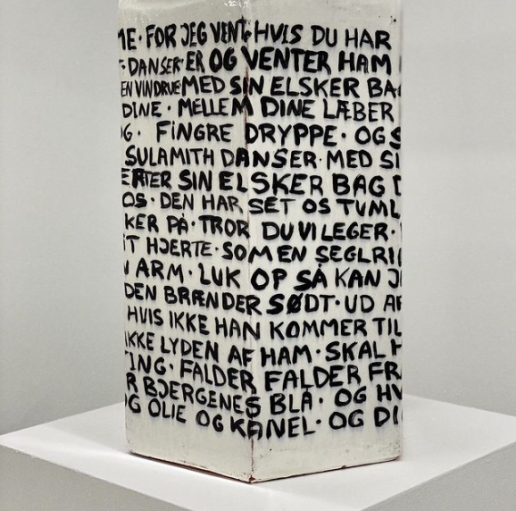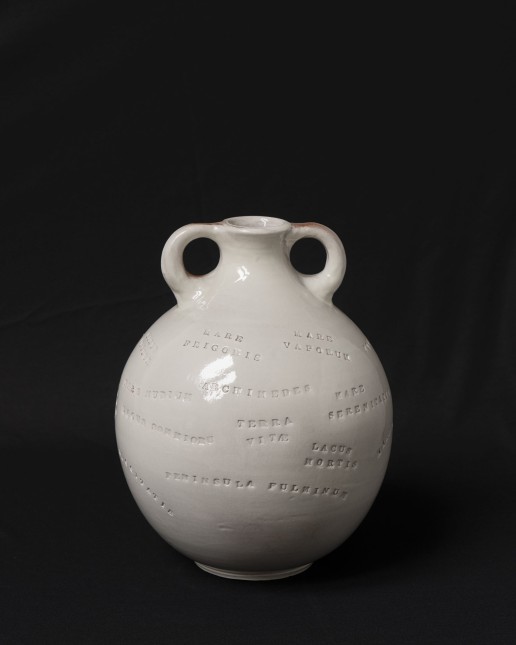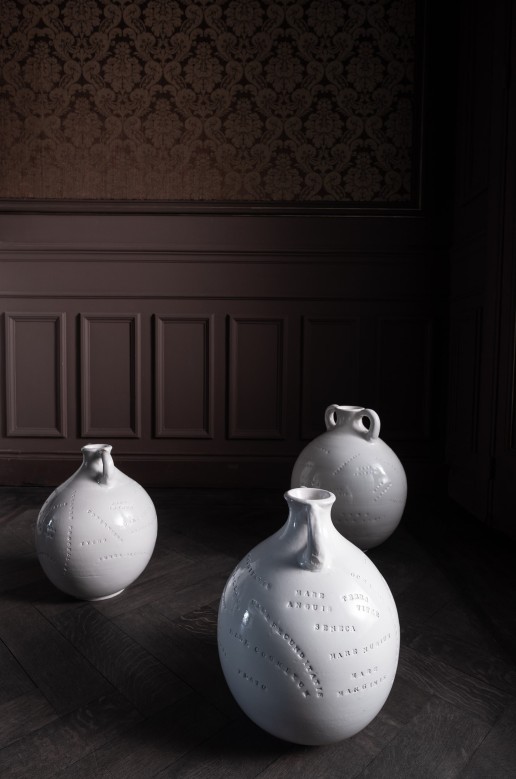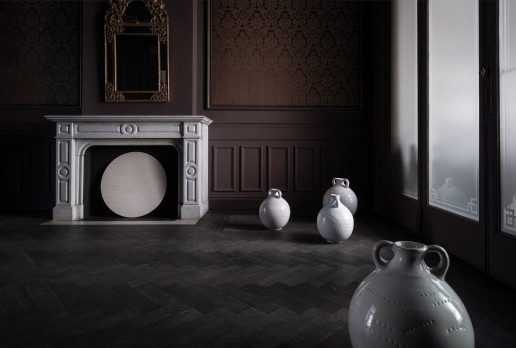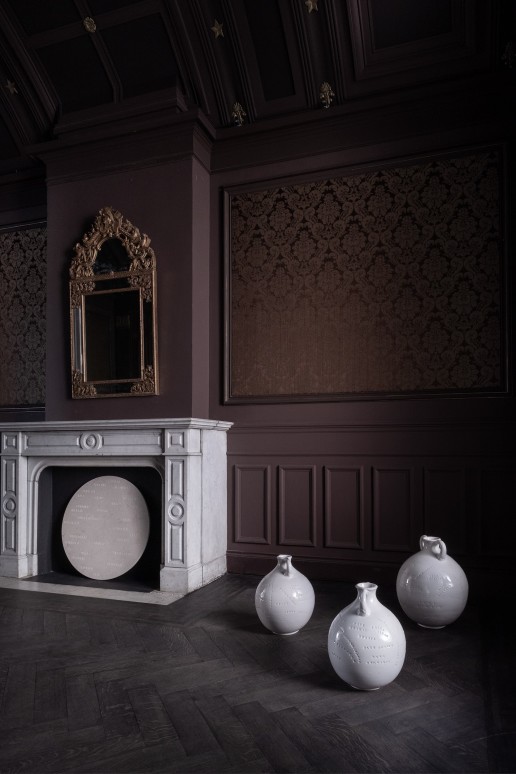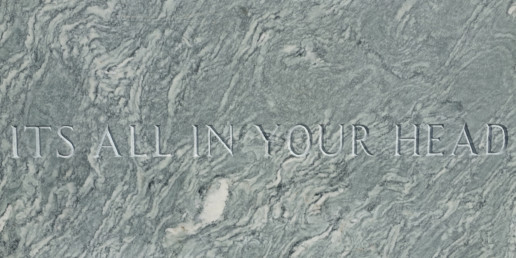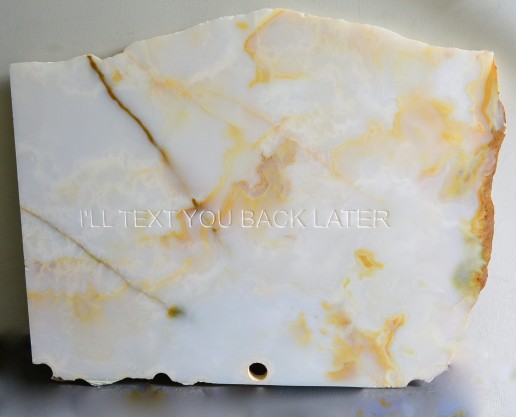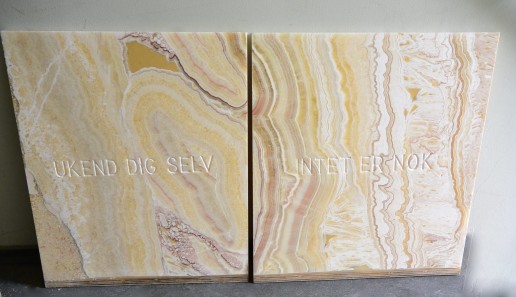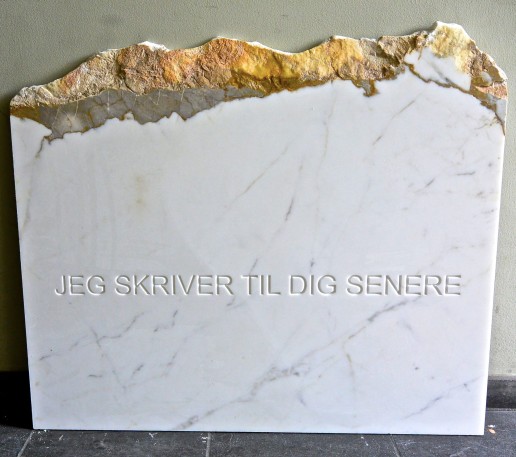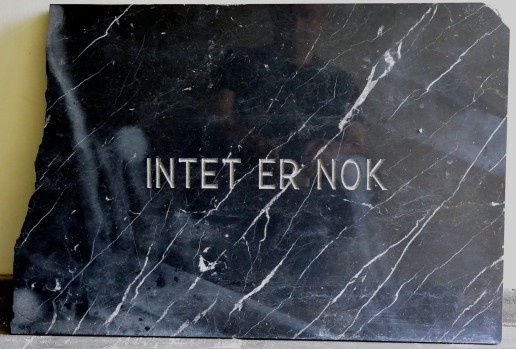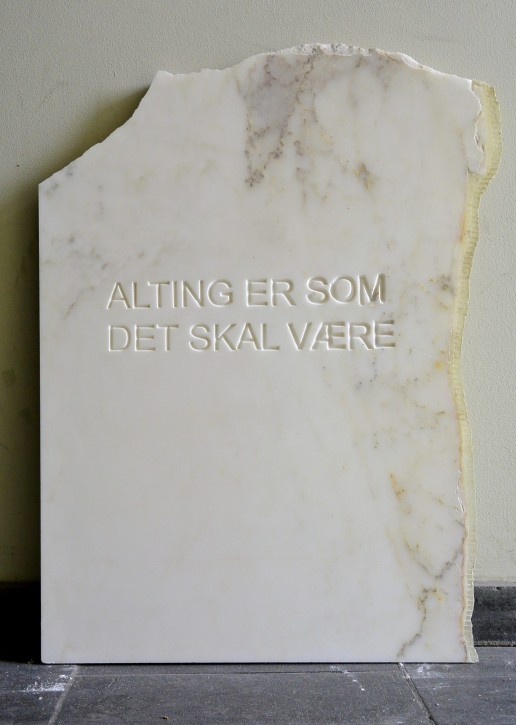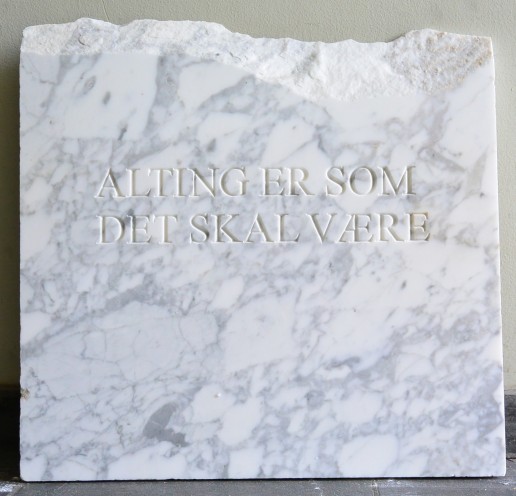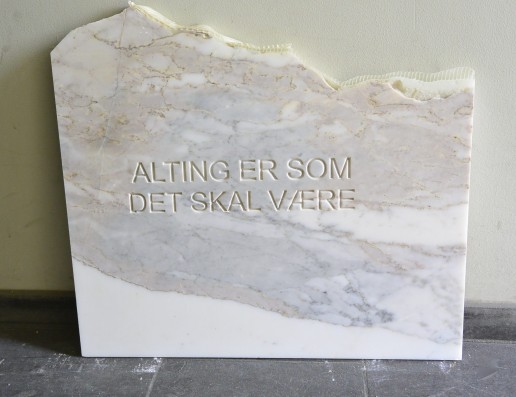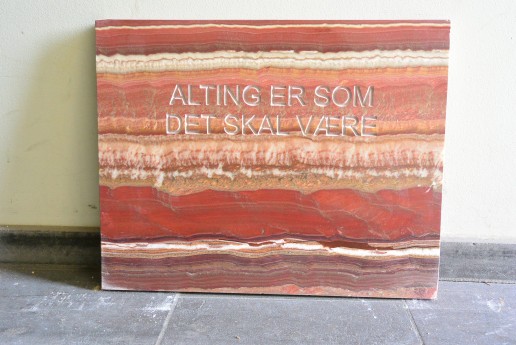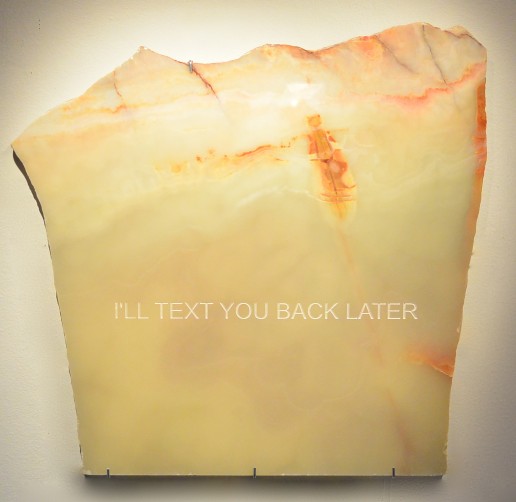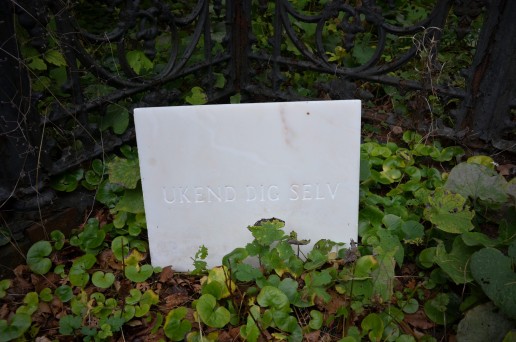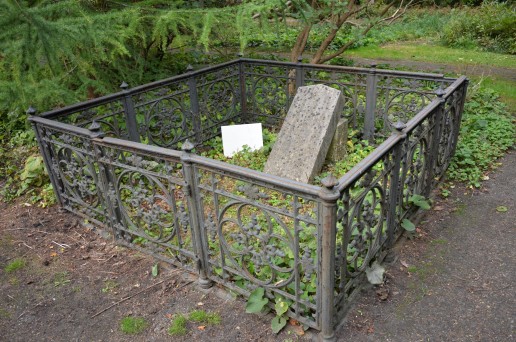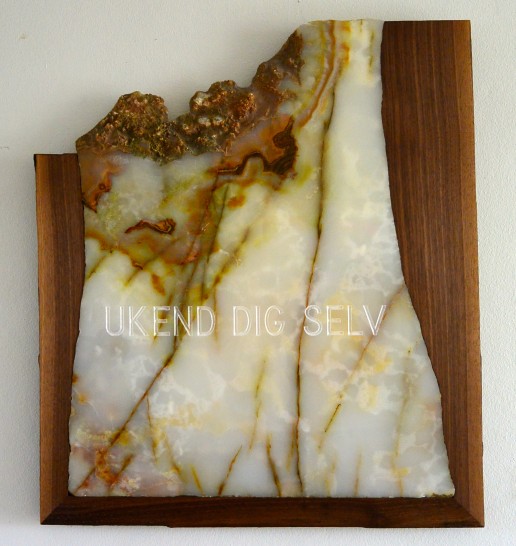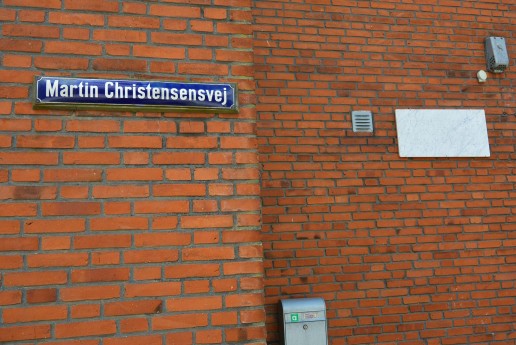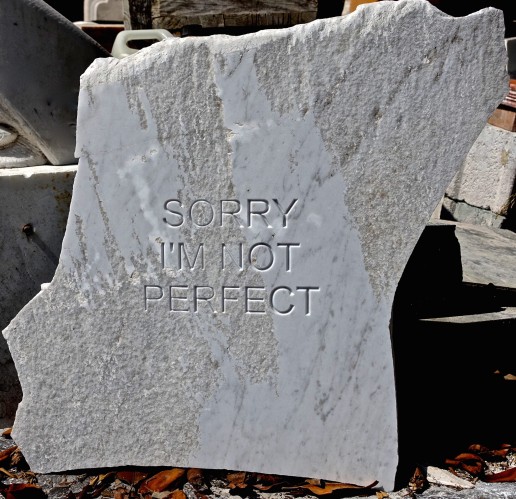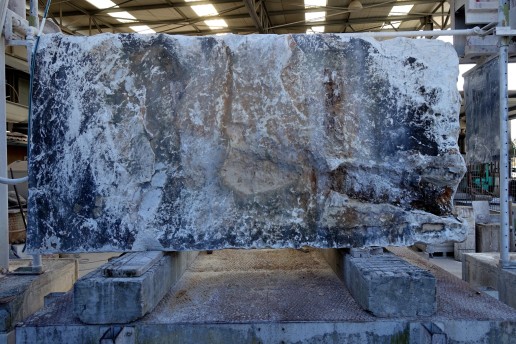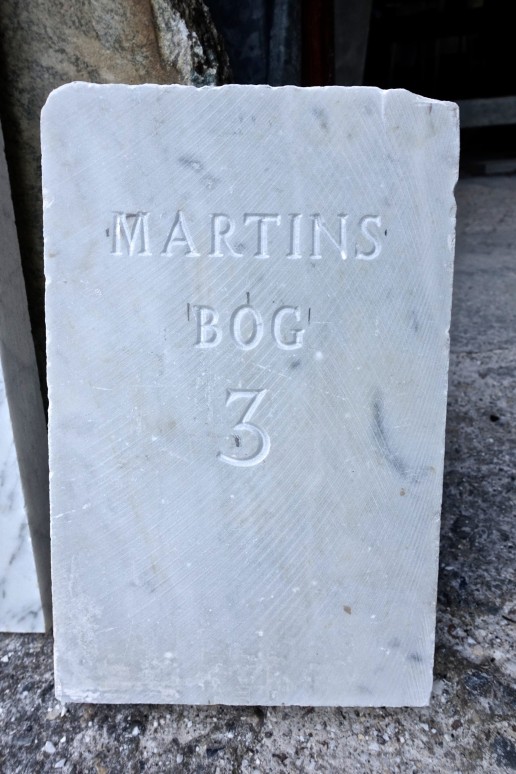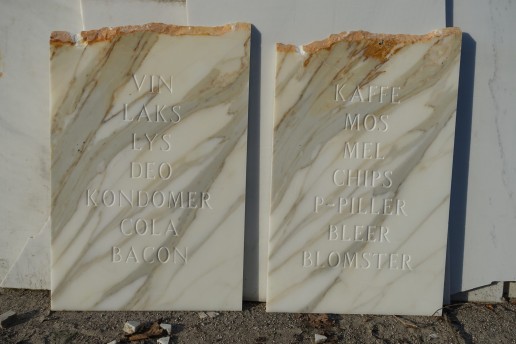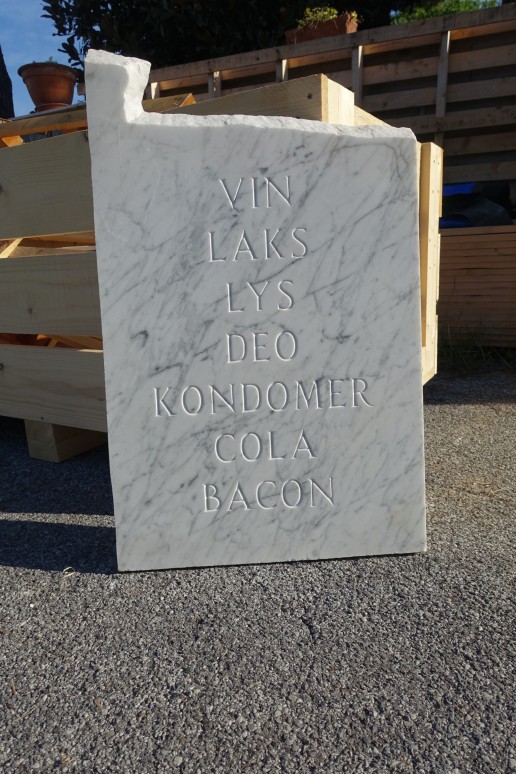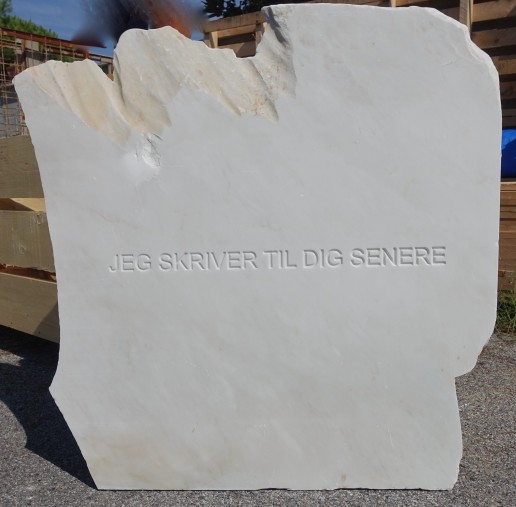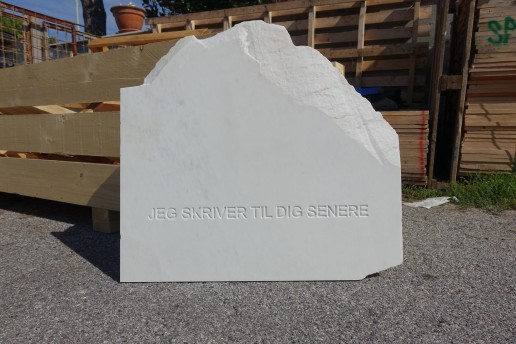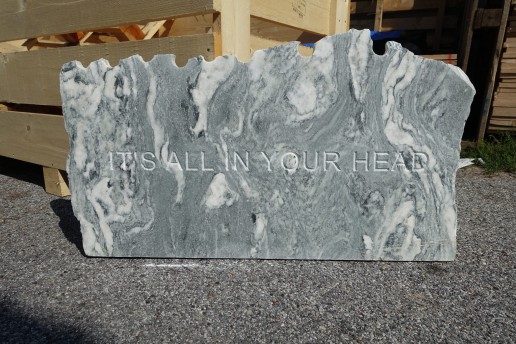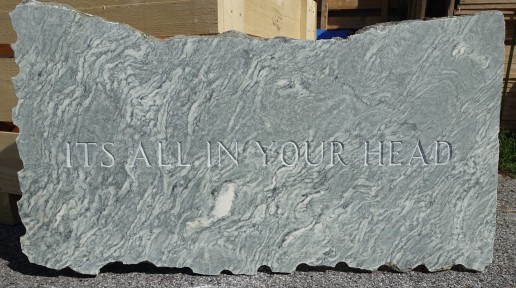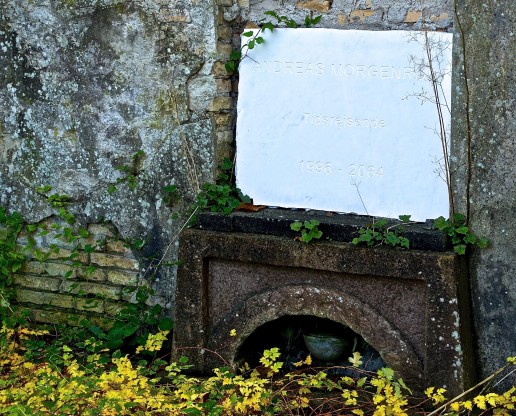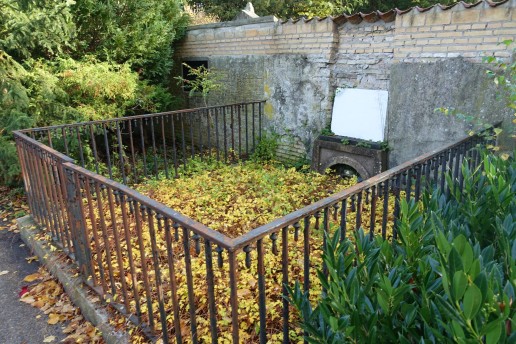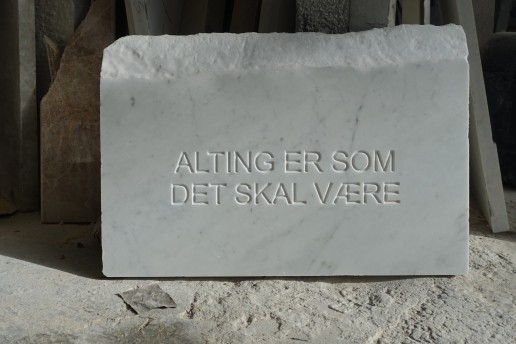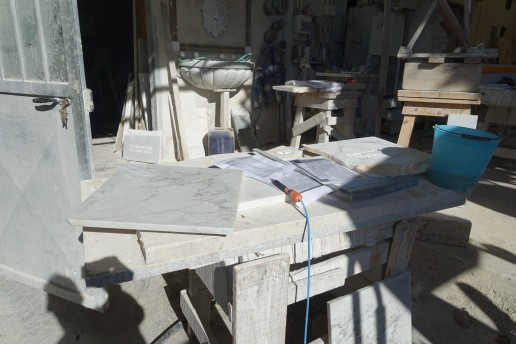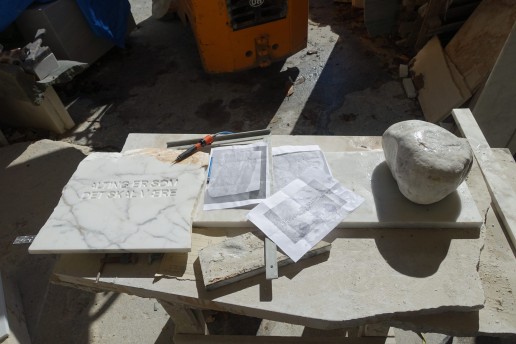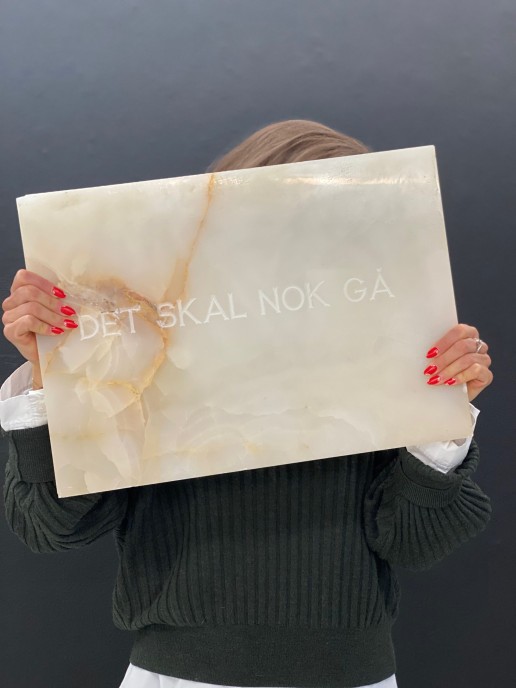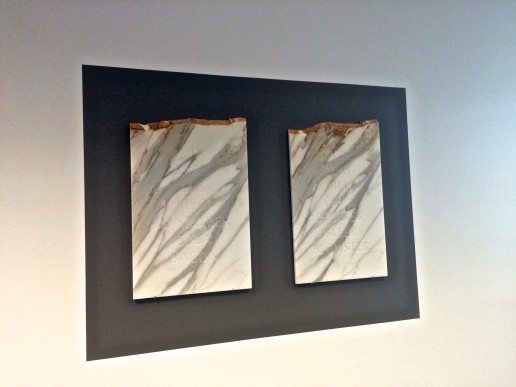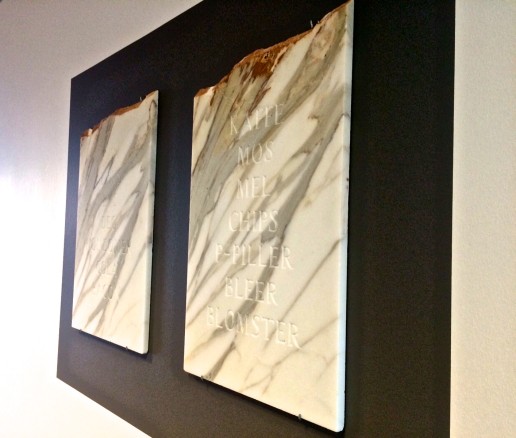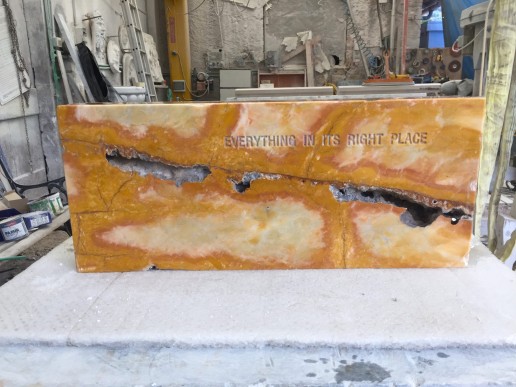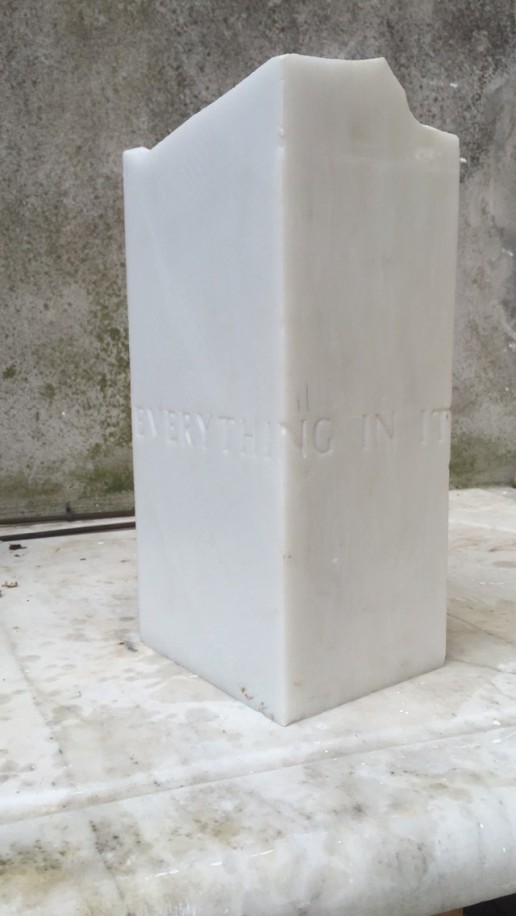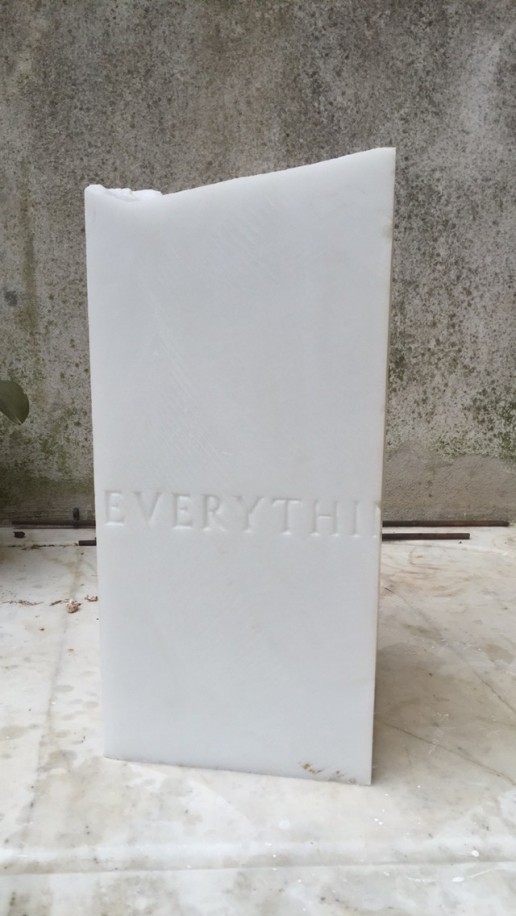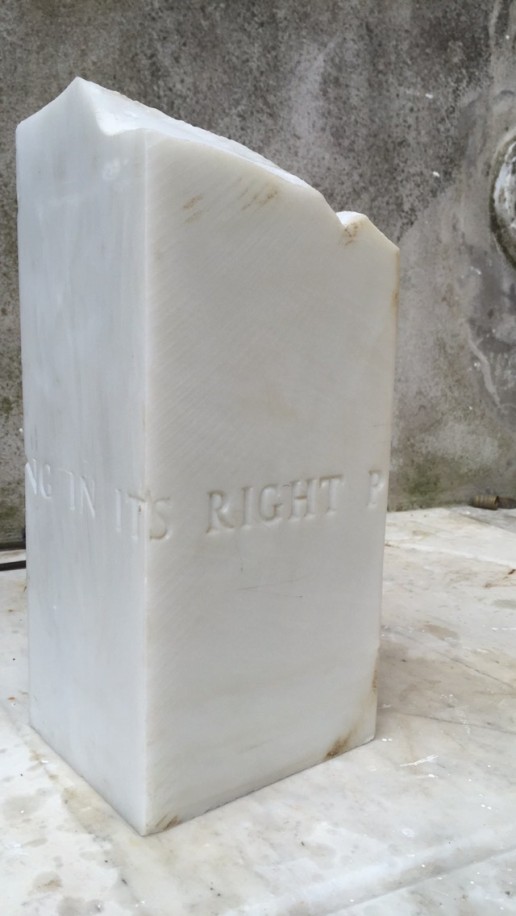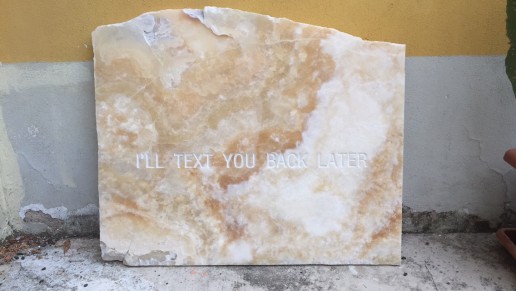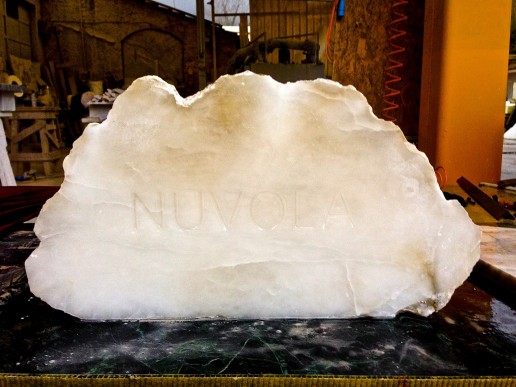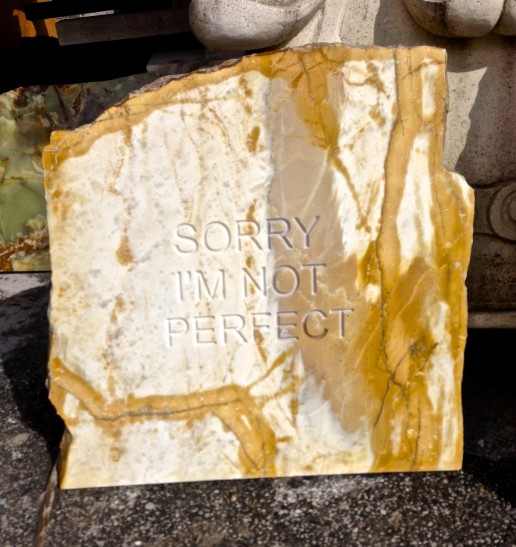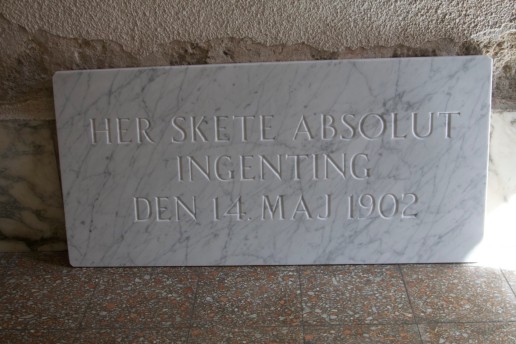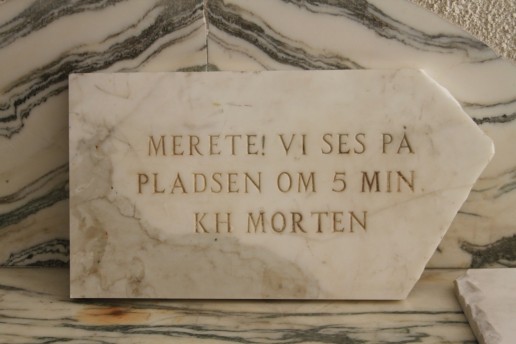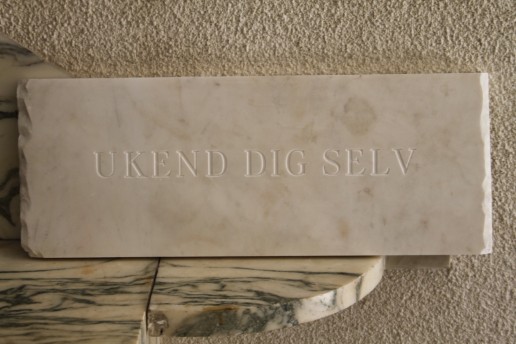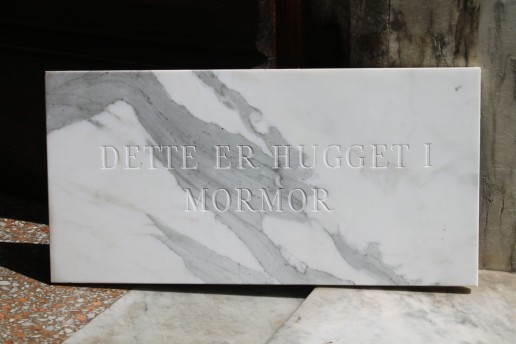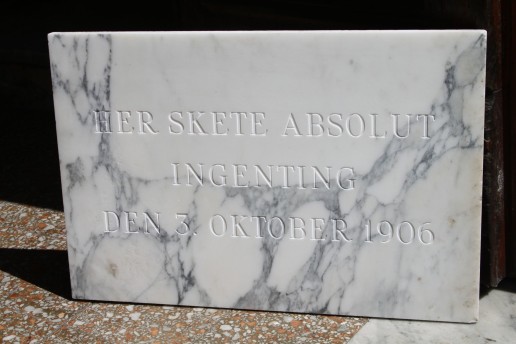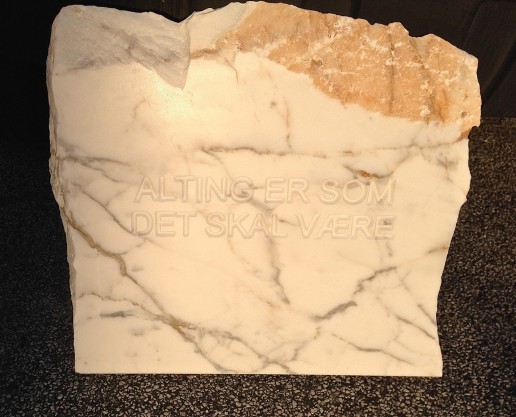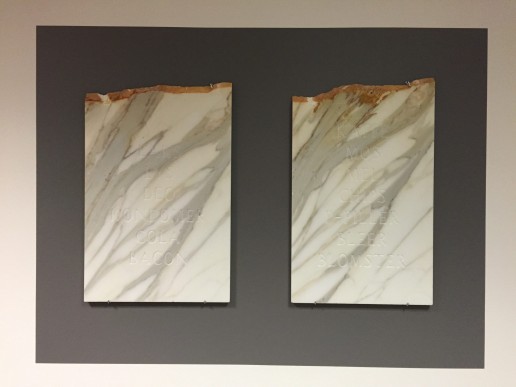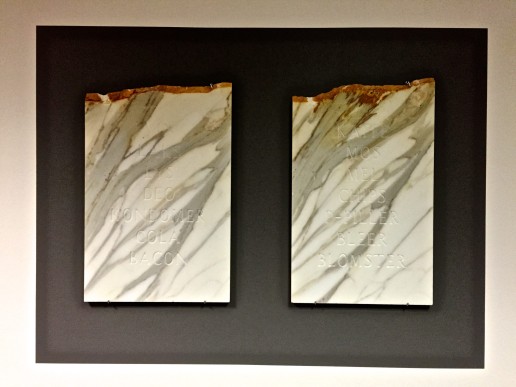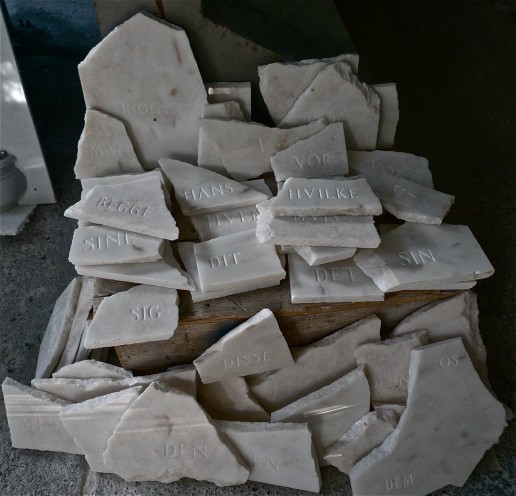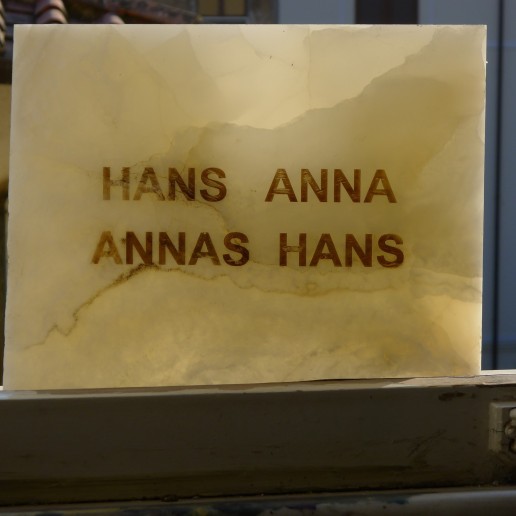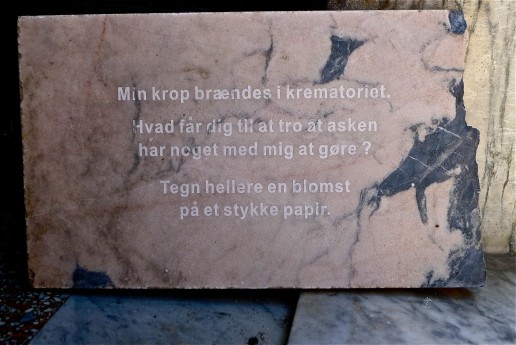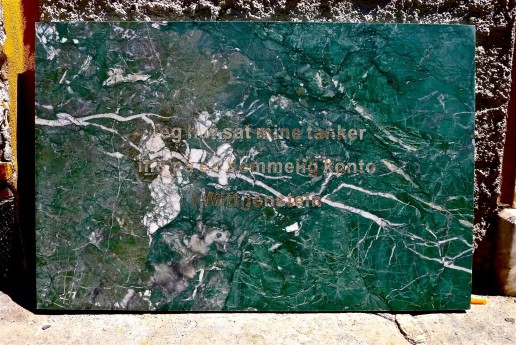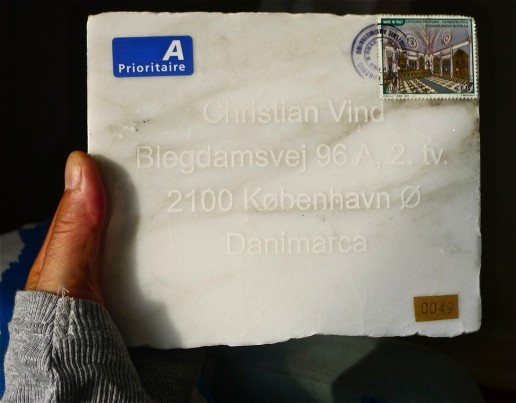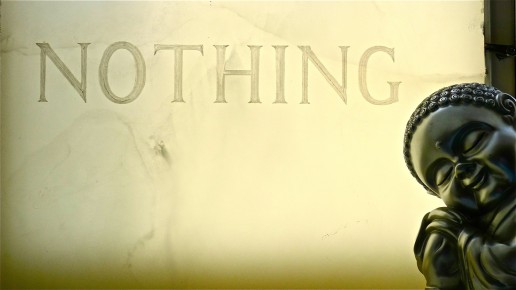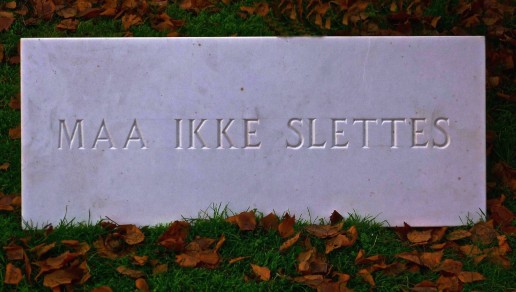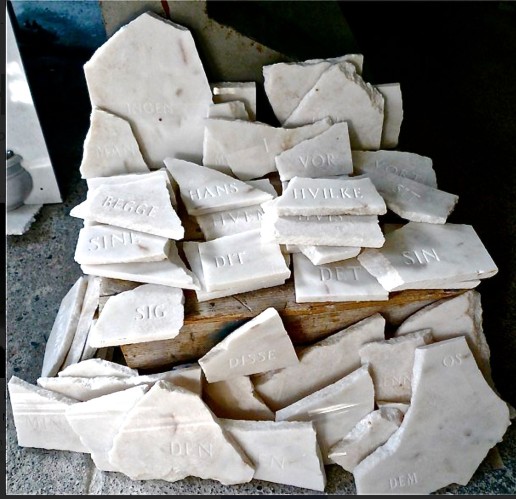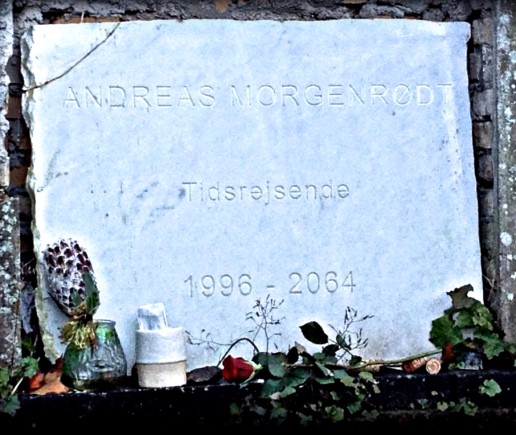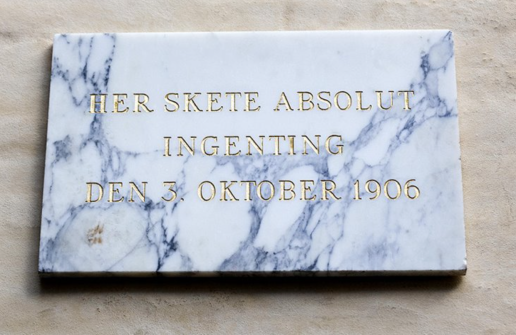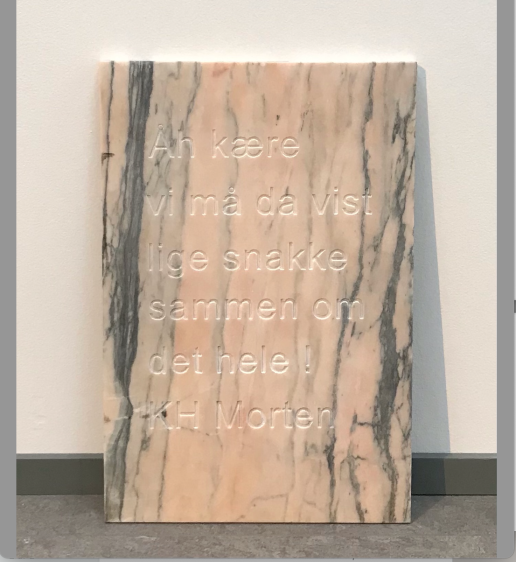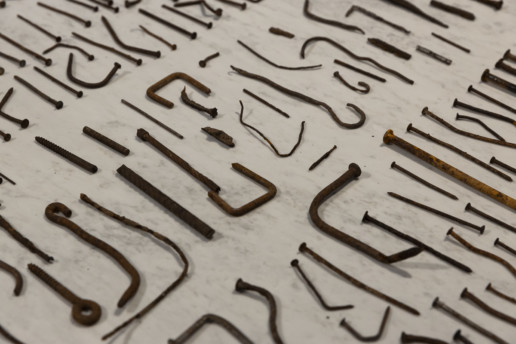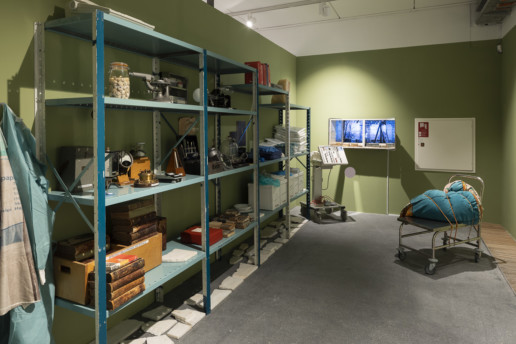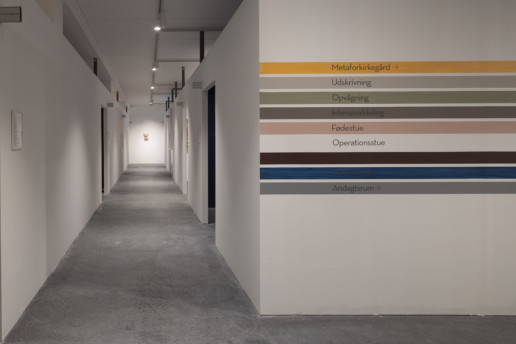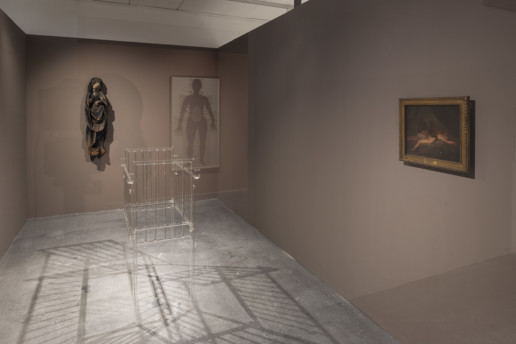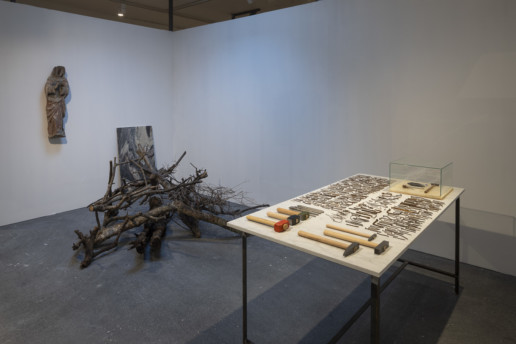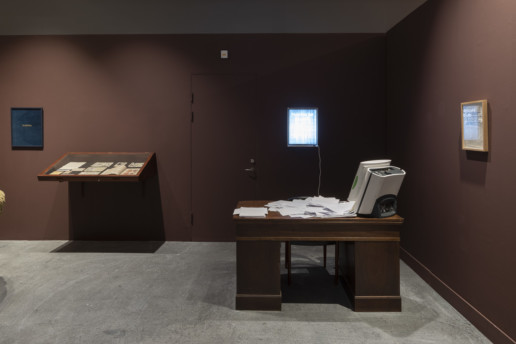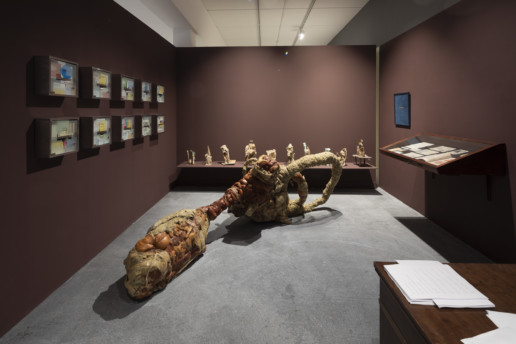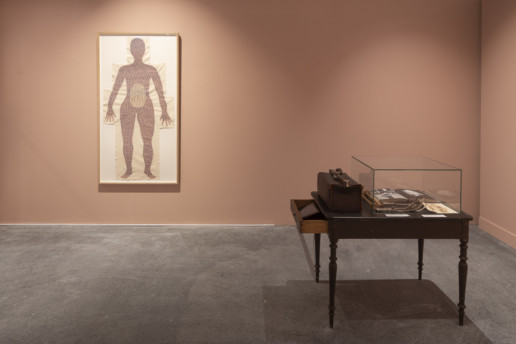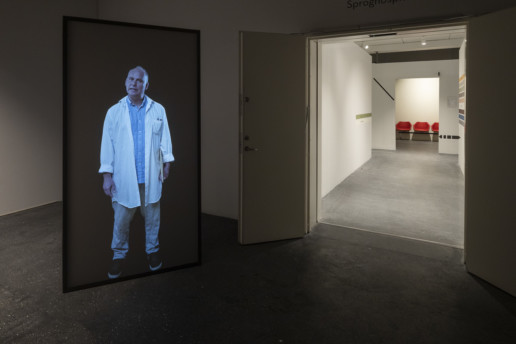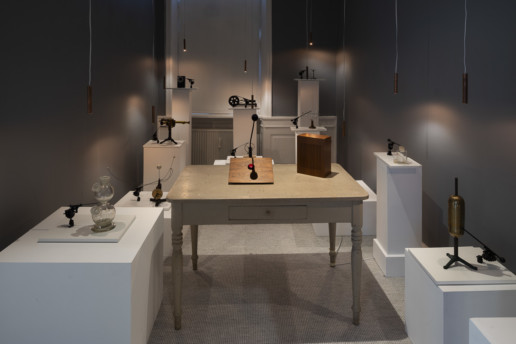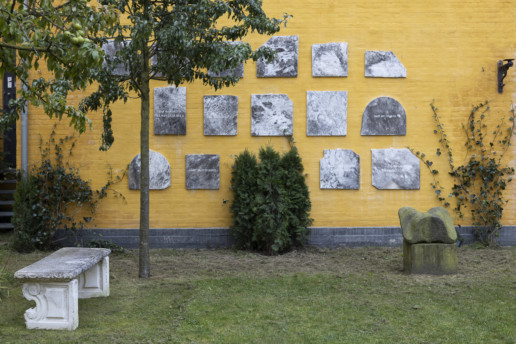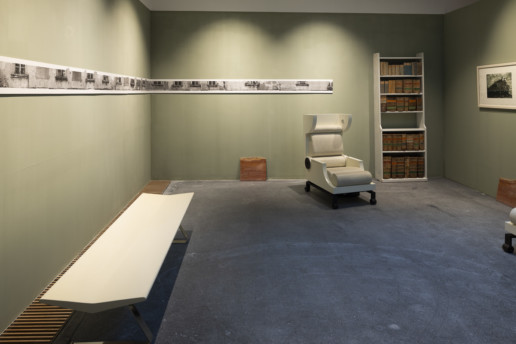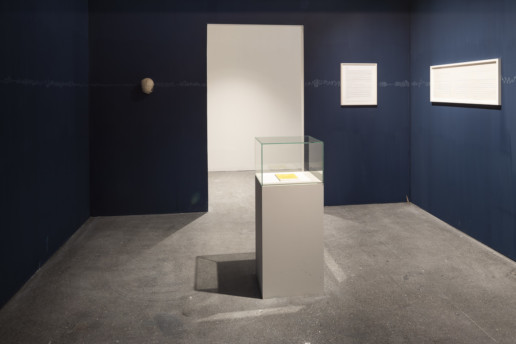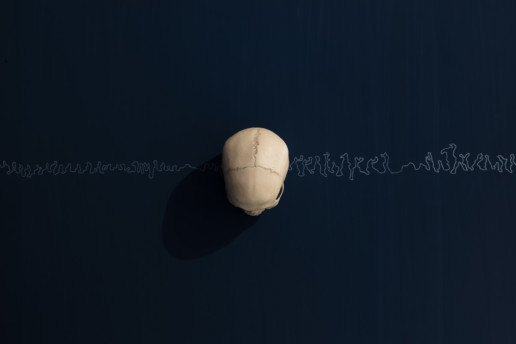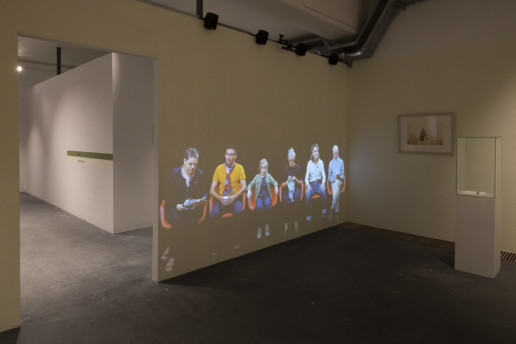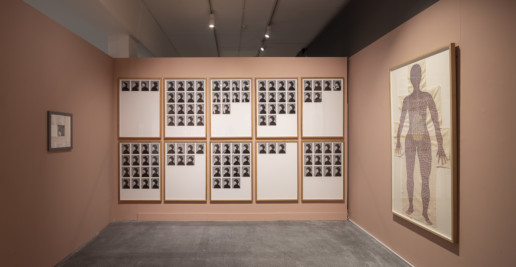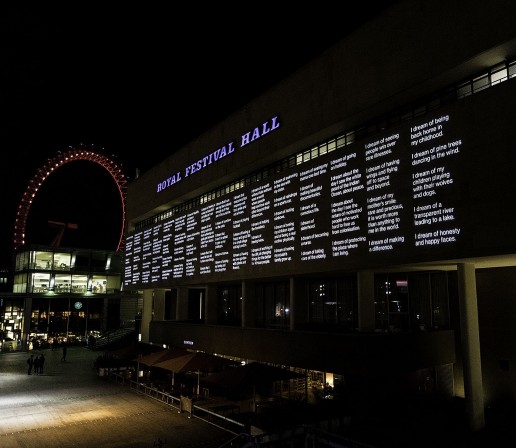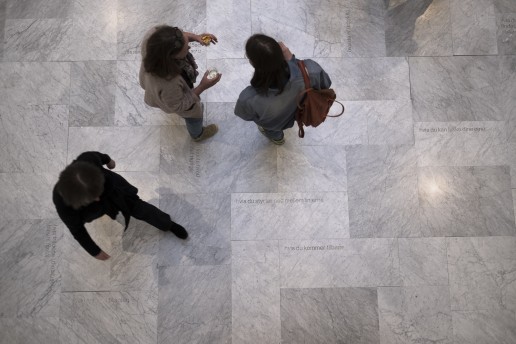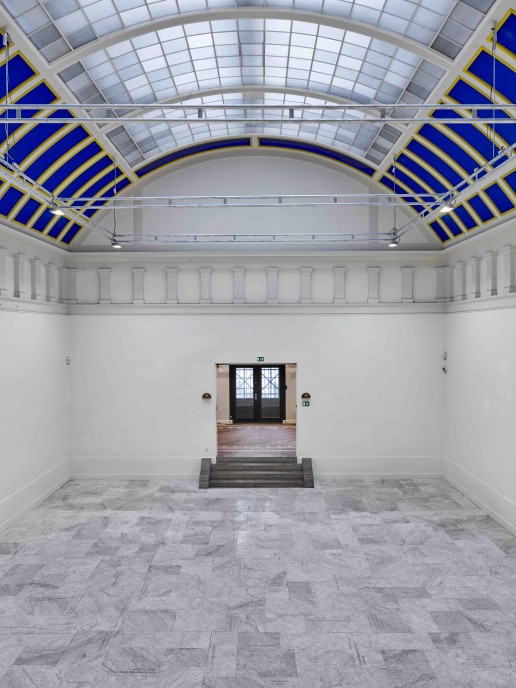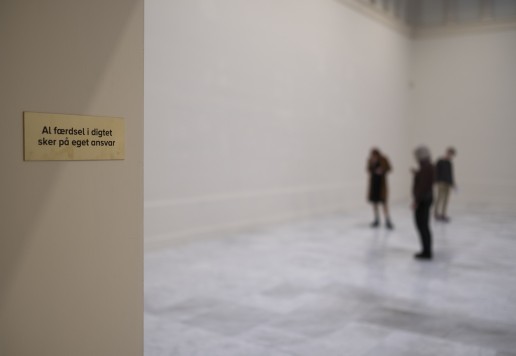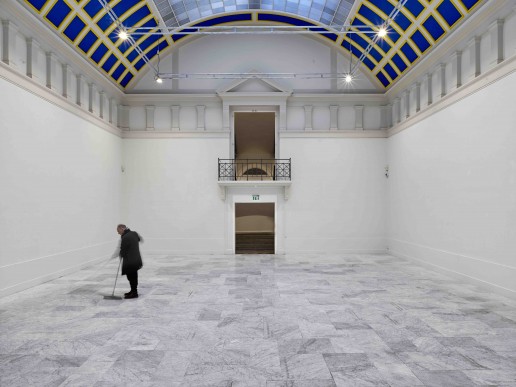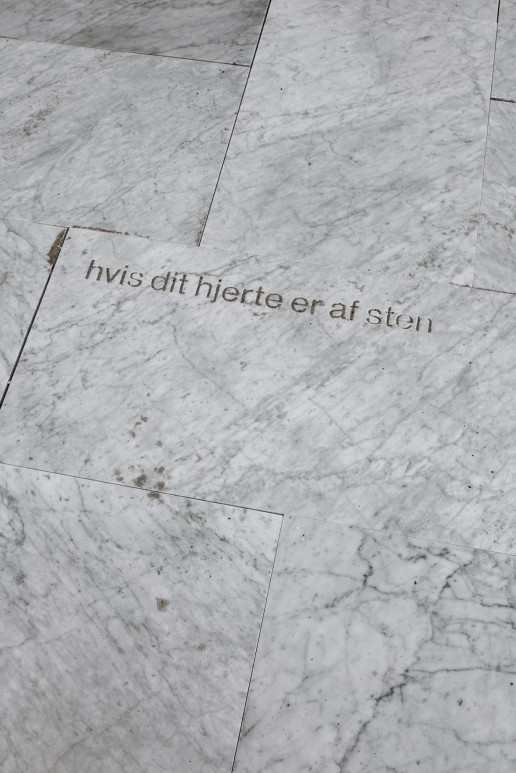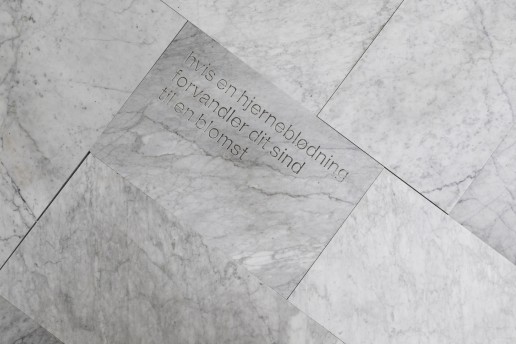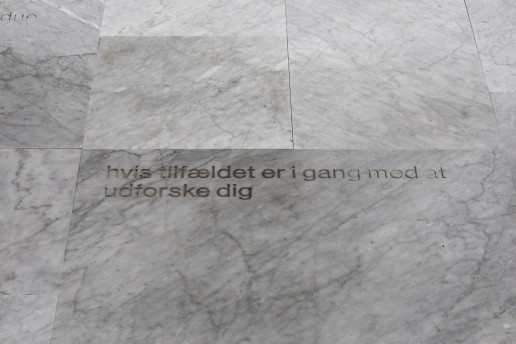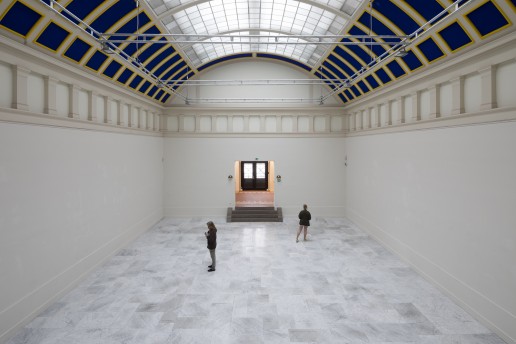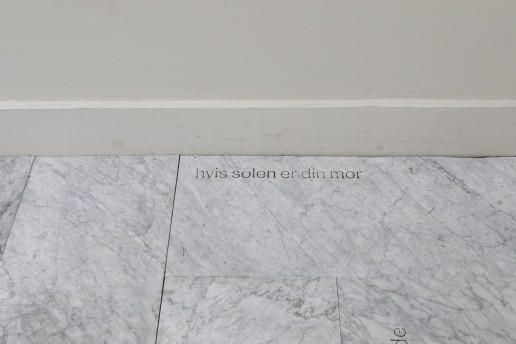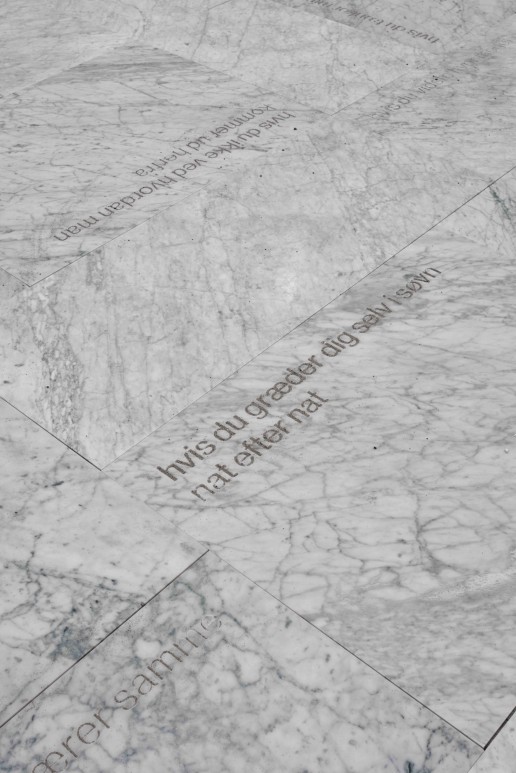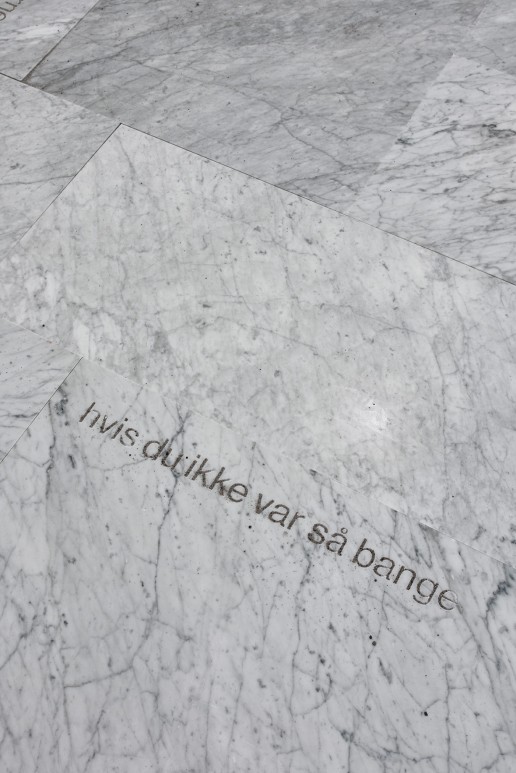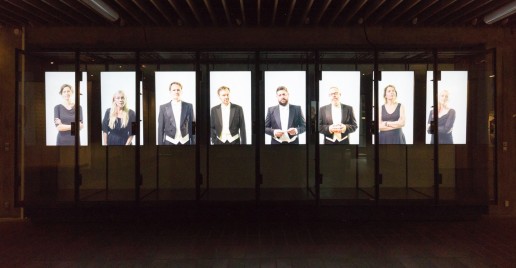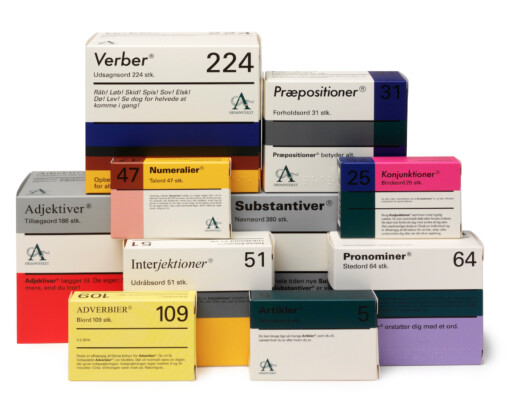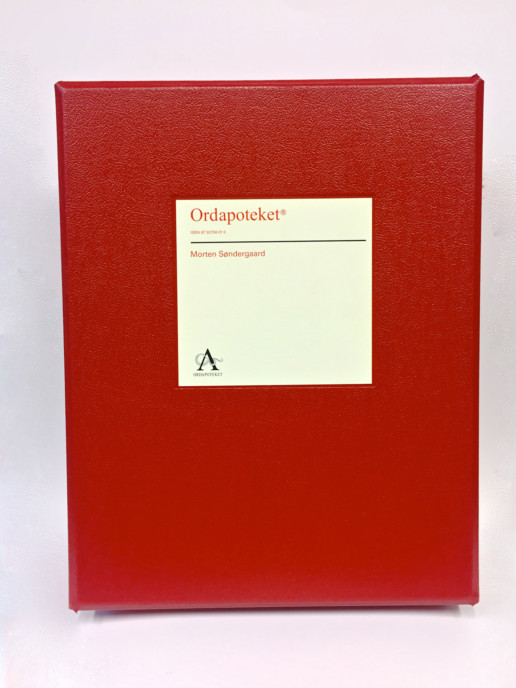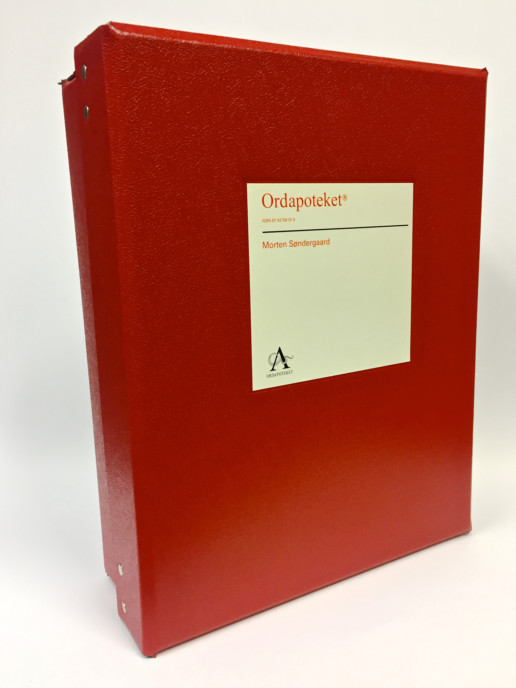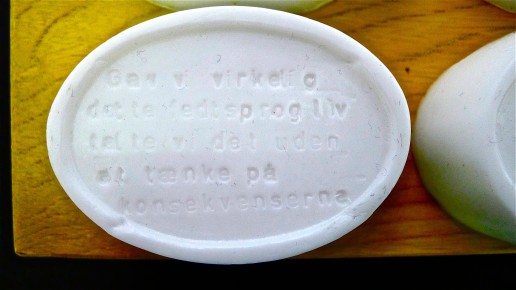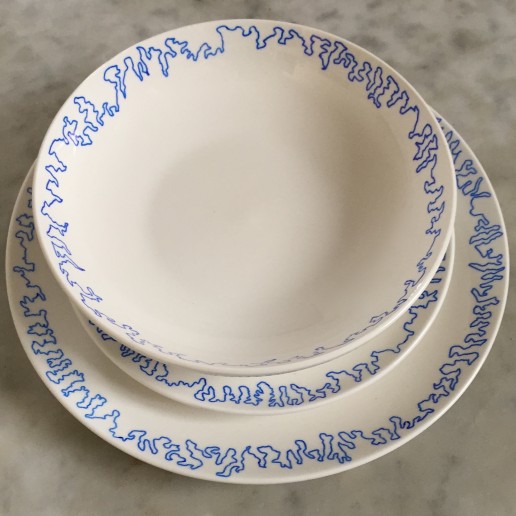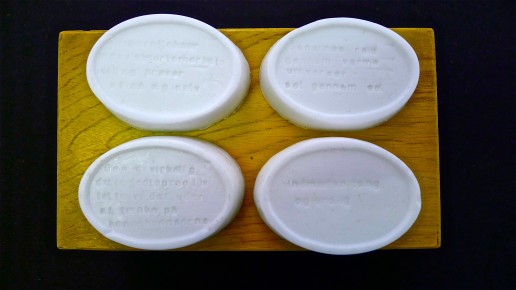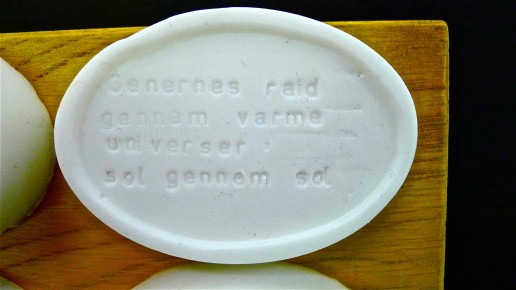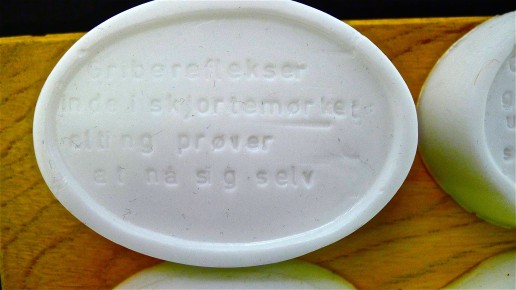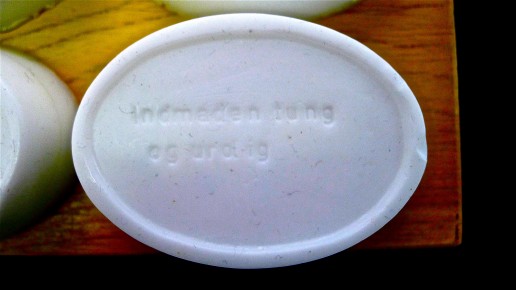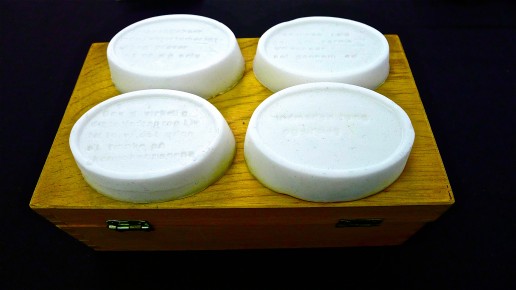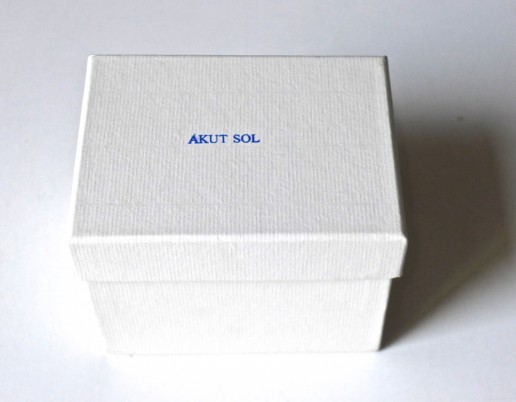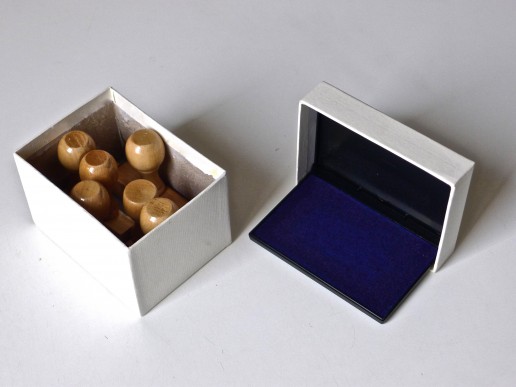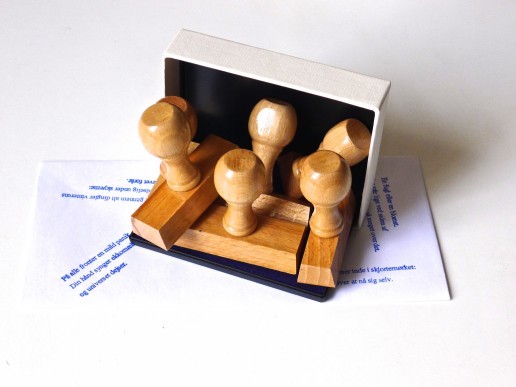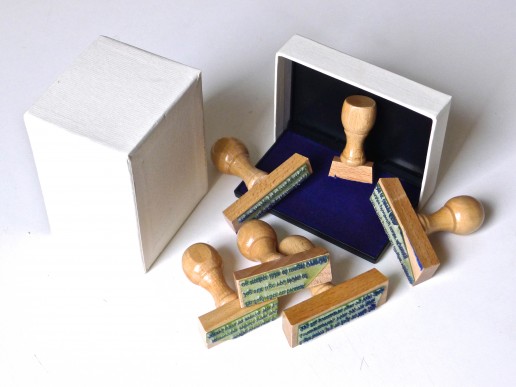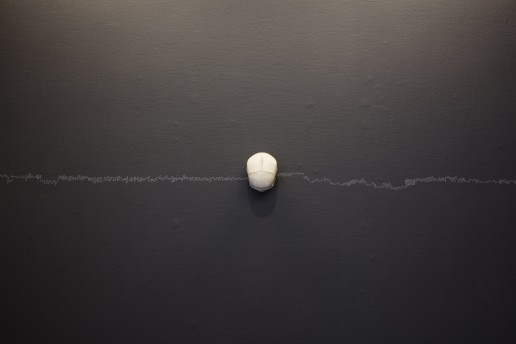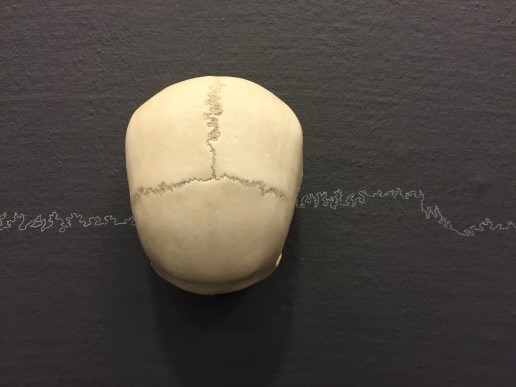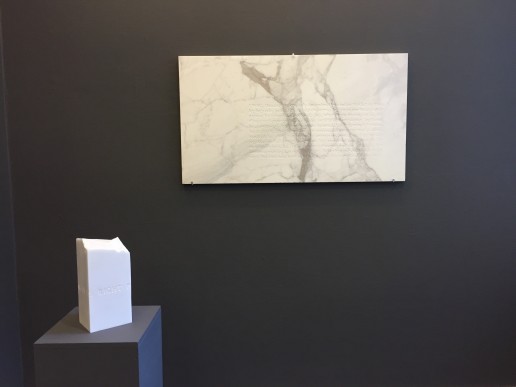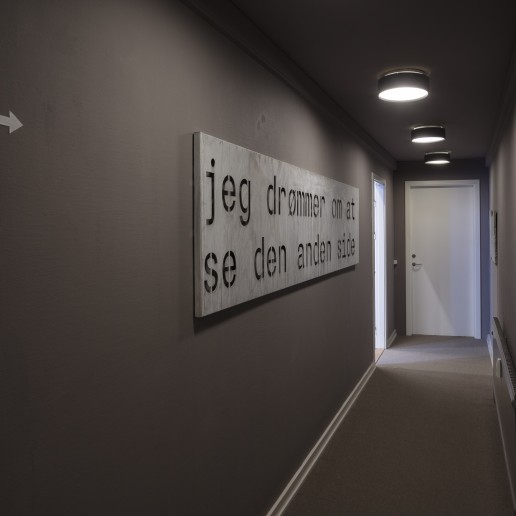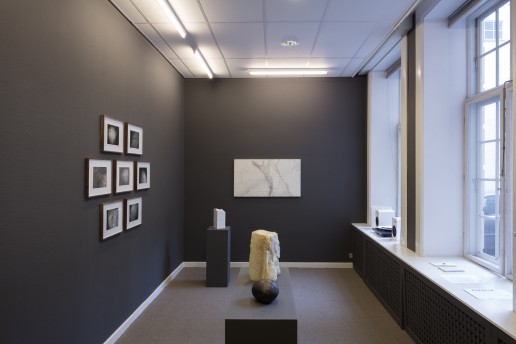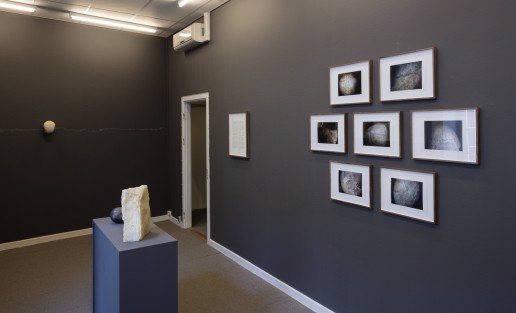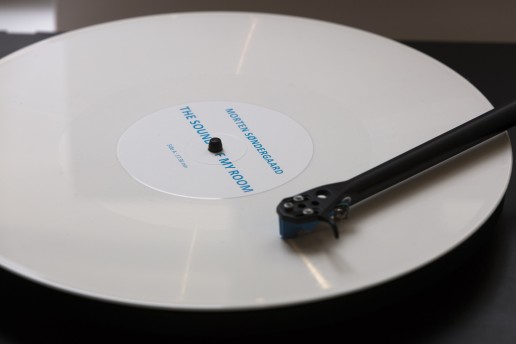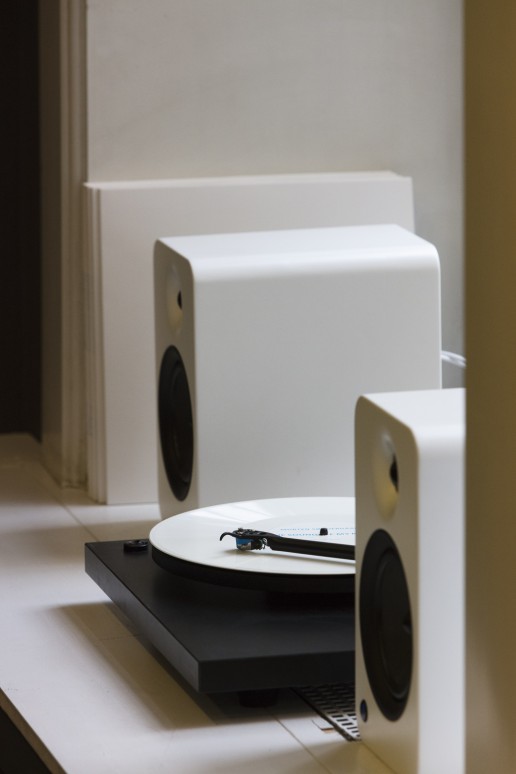DEN NYE HJØRNESTUE
DEN NYE HJØRNESTUE
For 200 år siden mødtes digtere, forfattere og videnskabsfolk hos ægteparret Kamma og Knud Lyne Rahbek for at diskutere, læse højt, give kritik og kreativ sparring. Interessen for sprog, kultur og kunst blev forenet i deres samtaler og samtalekulturen er dermed Bakkehusets vigtigste kulturarv.
Den nye hjørnestue på førstesalen er en nutidig spejling af Rahbeks historiske stue lige nedenunder. Den nye hjørnestue fortolker den salonkultur, som udfoldede sig i Bakkehuset for to hundrede år siden, ved at give plads til nye samtaler – samtaler som du kan være en del af.
Rummet er udsmykket med 29 skabe, et for hvert bogstav i alfabetet samt ét ord. Skabene indeholder tableauer og scenerier, som i kombination med Morten Søndergaards nyskrevne tekster stiller både store og små spørgsmål.
LER
LER
Krukken er en af menneskenes ældste kulturgenstande og udsmykningen af krukkernes overflader har haft talrige udforminger. Om det drejer sig om krukker udformet som amforaer til vin, beholdere til opbevaring af olie eller honning eller ligefrem den dødes aske, så har krukken altid fortalt en tredimensionel historie om menneskenes handlinger og tanker.
MARMOR
MARMOR
Her finder du fotos af nogle de værker jeg har lavet i marmor, det er undersøgelser af tidslighed og materialer, og også af udsigelsespositioner. Hvem taler når noget hugges i marmor? Og med hvilken vægt? Hvad betyder materialet for det indhold som ordene bærer med sig ud i verden?
SPROGHOSPITALET
SPROGHOSPITALET
Sproghospitalet er en sprogligt funderet udstilling, der med udgangspunkt i digter Morten Søndergaards Ordapotek behandler forholdet mellem poesi, kunst og sygdom.
Virker sproget i os ligesom medicin? Hvad sker der, hvis patienters metaforer for smerte ikke bliver forstået af lægen? Har sproget en krop man kan dissekere? Hvordan udtrykker man sprogets sammenbrud? Hvordan ser det ud, når ordene fødes ud i verden gennem munden? Skal man lade gamle virkningsløse sprogudtryk afgå ved døden? Sådanne spørgsmål er udgangspunktet for udstillingen Sproghospitalet.
Sproghospitalet udspringer af digter Morten Søndergaards Ordapotek, der beskriver sproget som medicin i pilleæsker med virkninger og bivirkninger. I stedet for de medicinske navne er det de forskellige ordklasser, der står på pilleæskerne; ordenes grammatik og medicinens sprog møder hinanden. I Sproghospitalet foldes dette møde ud i fuld skala: Sproget kan som en krop gå i stykker: En krop kan få amputeret et ben. En krop kan også miste sit sprog: Kroppen er et væv af forbundne organer og funktioner som arbejder sammen for at holde os i live. Også sproget består af mange dele – metaforer, talemåder og lyde – som gør det muligt at forstå hinanden.
Sygdom er en konkret virkelighed for mange mennesker, men også en stærk metafor, som til alle tider har gennemsyret kunst og kultur. Den måde, vi taler om sygdom på, og de diagnoser vi hæfter på hinanden, påvirker vores sygdomsoplevelse og velbefindende i stort omfang.
Sproghospitalet er et sted, hvor sammenhængen mellem sprog og sygdom materialiseres i kunstværker – både nyproducerede værker, indlånte værker og værker fra museets samling. Udstillingen er opbygget som et, noget utraditionelt, hospital i museets underetage. Her er fx et venteværelse, hvor besøgende og sproget gør ophold; en fødestue, hvor ordene fødes; en intensivafdeling, hvor sproget ikke slår til – og på metaforkirkegården udenfor er de udslidte sprogkroppe.
Sproghospitalet behandler sproget og de besøgende, for når sproget er sygt, er det os mennesker, der oplever symptomerne Der er ingen garanti for helbredelse, men garanti for et højspændt betydningsfelt, hvor museumsgæsten bliver indlagt til at tænke over de sproglige mekanismer, der påvirker deres velbefindende.
Medvirkende kunstnere:
Morten Søndergaard, Mona Hatoum, Nicolai Abildgaard, Francesca Woodman, Emil Westman Hertz, Gudrun Hasle, Darren Almond, Stense Andrea Lind-Valdan, Katrine Skovsgaard, Olafur Eliasson, Maiken Bent, Anita Jørgensen, Christian Lemmerz, Rikke Benborg, J. F. Willumsen, Anders Bonnesen, Morten Schelde, Johan og Urte Oettinger, Christian Ramsø, Mikael Thejll, Jonas R. Kirkegaard og The Overheard, Asger Jorn, Christian Dotremont, Noël Arnaud, Astrid Gjesing, Christian Ramsø.
Sproghospitalet er udviklet og initieret af Morten Søndergaard og Sorø Kunstmuseum i tæt dialog med udstillingens scenograf Annesofie Becker.
Udstillingen er ledsaget af to publikationer
Journal 2019, som er en digtsamling af Morten Søndergaard bl.a. om det nedlagte sindssygehospital i Volterra, hvor en patient har indridset en 70 m lang tekst.
Vandrejournalen er en samling tekster og andre bidrag af kunsthistorikere, læger, kunstnere, digtere og patienter, der omhandler grænsefladerne mellem sprog, kunst og sygdom.
Tekst af : Sorø Kunstmuseum, 2019
Foto: Torben Eskerod
WALL OF DREAMS
WALL OF DREAMS
Wall of Dreams was a large-scale visual projection onto Royal Festival Hall, produced for the launch of Southbank Centre’s Poetry International and London Literature Festivals. The Wall of Dreams is an enormous collective poem written with the dreams of refugees, and was feature as the visual narrative for the festival.
Dreams are wishes, hopes and visions for the future, formulated so that each one begins with “I dream…”. Every dream acts as a window into people’s thoughts as while they are on the move or trying to settle in a new place.
To write something on a wall is a special thing to do. We say “The writing on the wall” meaning what is true or inevitable. Posters, announcements and warnings are often put on walls. This vertical writing is different from the writing found in books. It speaks with another voice. It is louder and speaks with more authority.
The dreams was be projected onto the walls of the Royal Festival Hall at the Southbank Centre using high-intensity light projections. A simple but strong gesture: words from people that are seeking refuge, gave others the opportunity to take notice and so give agency to them.
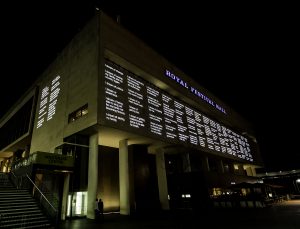
The dreams was collected in collaboration with the Southbank Centre and poets Jasmine Ann Cooray and Kayo Chingonyi and the activist Naja Ashley Misfeldt, from refugees and migrants currently living in the U.K., Greece, France, Germany and Denmark. The project created a dynamic and strong energy from its participants. A total of 550 dreams was projected onto the Royal Festival Hall across three weeks from the opening of Poetry International and London Literature Festivals 2017. The range of participants spans from Syria, Afghanistan, Sudan, Guinea, Eritrea, Somalia and many other counties.
As described in the current media, refugees and migrants are an indistinguishable mass and viewed as an ‘other’ in society. This artwork and project was an opportunity to effect a change in this representation. The intention of the Wall of Dreams was to convey a different narrative.
A dream is an aspiration. It provides a glimpse of a person and a culture from within, and without judgment. By focusing on dreams, we focus on the dignity and pride of each person. Something from within shines out, just like the dreams that was projected onto the surface of the building. The dreams formed a collective poem written by people from all over the world in the same situation.
The Wall of Dreams was an inclusive gesture, not a confrontational one. People on the move seek shelter, welcoming walls and roofs for protection.
The Wall of Dreams offered a common and uniting image that focuses on the universal. Dreams and aspirations that we all have, and which bind us together as human beings. When an individual meets another, something new happens and it often helps to erase prejudices. People who are hostile to strangers in the mass, rarely have the same attitude to those who work in the shop around the corner. When we meet people face to face, stereotypical thinking often goes away. When we hear each other’s dreams, empathy is unavoidable.
The voices found on the Wall of Dreams are all very different. They are a multitude and yet each voice represents an individual. It is a sharing wall, an inclusive wall, a connective interface, that we hope will make an original contribution to the debate on how Europe should respond to its refugee crises.
Thanks to these organisations: Help Refugees, London, UK, Refugee Youth, London, UK, Women for Refugee Women, London, UK, Nomad, London, UK, CARAS, London, UK, Alkyone day center, Greece, Arsis, Greece, Intervolve, Softex Refugee Camp, Thessaloniki, Greece, Jafra R2R, Greece, Khora community centre, Greece, Melissa Network, Athen, Greece, Lesvos solidarity, Pikpa camp, Lesvos, Greece, Swiss Cross, Lesvos, Greece, Drop in the ocean, Skaramangas camp, Athens, Greece, Refugees at Louisiana Art Museum Humlebæk, Denmark, Refugees at SIK Sprogcenteret in Kalundborg, Denmark, refugees in and around Paris, France, refugees at Lampedusa, Italy. Thanks to Lars Sidenius, Bea Colley, Lizzie Wait, Egle Banelyte, Jérémy Ristord, Anna Maria Orrù and a special thanks to Naja Ashley Misfeldt.
The Wall of Dreams is part of Nordic Matters Festival at Southbank Centre and is sponsored by Danish
Arts Foundation, The Royal Danish Embassy London and SGM Lights and is based on an artwork by Morten Søndergaard.
All visuals designed by Wrong Studio
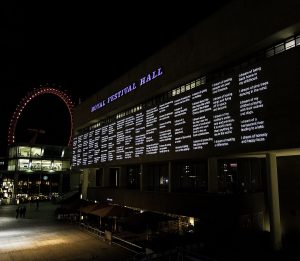
UKEND DIG SELV
UKEND DIG SELV
Tanker på gulvet
Mit gulv består af næsten 200 kvadratmeter italiensk Carrara-marmor med indhuggede sætninger inspireret af oldbabylonske varsler. Sætningerne starter med ordet hvis, der er som regel et du, men der er ikke noget så.
De er som de regler man satte sig som barn: hvis jeg træder på stregerne så… Eller: hvis jeg rammer papirkurven med min papirkugle så… Som barn var spørgsmålet: Hvad er i alverden er verden for et sted og hvem er jeg i den? Vi stiller spørgsmål for at forstå hvor vi er og hvem vi er. Kend dig selv stod indhugget i Apollon-templet i Grækenland. Det var en grundsætning for det græske samfund.
I oldtiden tog man varsler. Man studerede fårelever og så på fugletræk. Man så verden som et væv af tegn som skulle tydes. I Babylon udviklede man et helt system af varsler som opregnede en række situationer som så havde deres egen logik: “Hvis man finder en grøn skorpion med vinger i en mands hus, vil byen blive forladt.” eller “Hvis dørene i en by hele tiden knirker, vil byen blive forladt.”
Hvis man bevæger sig ind i rummet på Brandts 13, vil det også være for at læse. Læsning foregår normalt i enrum og i håndgribelig form. Men på mit gulv vil man læse med kroppen og man vil læse ved at bevæge sig fysisk i en læsende dans. Og læsningen vil afsætte læsespor på gulvet.
Teksten rummer i sig en form for arkæologi, et sediment af mange slags tekster. En af dem er et spørgeskema fra en lægeundersøgelse i forbindelse med depression, en anden er spørgsmål stillet i helt andre sammenhænge, modtaget på Facebook, overhørte, i bøger, i forbifarten.
Vi spørger. For at blive klogere, på os selv og på fremtiden.
Marmor er et materiale som vi forbinder med evige sætninger: Det er kun ord med vægt, der mejsles i marmor. Skulptursalen på Brandts 13 er forvandlet til et digt, et rum for reflektion. Ordene er sunket til bunds i tiden. I den tekst som er fundamentet for Ukend dig selv er sætningerne i tvivl. Det de ved, er kun halvt. Det er op til dig at fuldende dem med dit liv, din viden og din tvivl.
Det er dig der er hovedpersonen.
UKEND DIG SELV, Brandts13, 2017
SUGAR THEATRE
Sugar Theater takes its point of departure in conversations between a poet immersed in the convoluted and complex spaces between words and bodies, and scientists at the Faculty of Health and Medical Sciences occupied with deciphering somatic structures of information and communication related to sugar. Interestingly, it took very little time for the poet and scientists to find a common point of departure for ongoing, interdisciplinary conversations: namely the shared usage of metaphor in the undertaking and explanation of research into core matters of things.
Sugar Theater is an exhibition by Morten Søndergaard made in collaboration with Laboratory for Aesthetics and Ecology.
From January 18, 2017
Faculty of Health and Medical Sciences
Entrance: Blegdamsvej 3B
Monday-Friday 7am-17pm
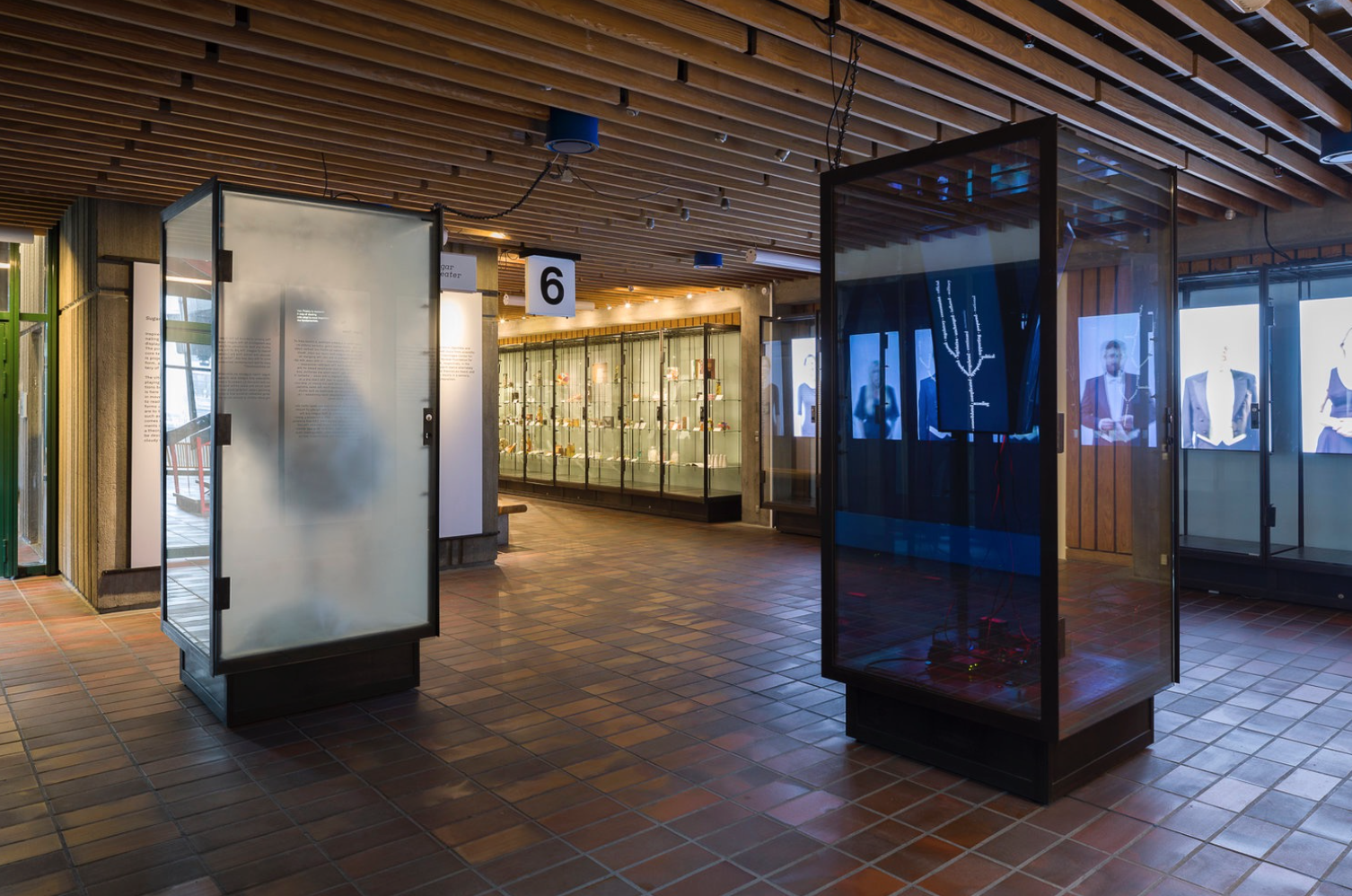
The exhibition Sugar Theater is a theatrical fabulation, a fantasmagoric encyclopedia of sugar playing with the many sticky connections between science and art, between bodies and languages, between things and the definitions we deploy in order to make sense of them. The exhibition asks: how, who and what have we become with sugar?
Sugar is one of the most fundamental building blocks of nature. Organic material is composed largely by sucrose, glucose and starch: sunlight and water transformed by photosynthesis into sugary substances for the compositions of life on this planet. Concurrently, sugar is also a dominant – and potentially dangerous – part of our everyday: of our landscapes, our histories, health and diets.
As a crop heavily tainted by the horrors of colonial history, sugar has played a huge part in defining national borders, ecologies, global economies, cultural barriers and artistic practices – even some of the most influential European art institutions are founded upon money made from sugar production.
From an evolutionary perspective, we might say that sweetness has conquered us; that nature’s own means of saccharine seduction has persuaded us into spreading, cultivating and securing sweetness to a potentially harmful degree – for the health of humans and biospheres alike.
Sugar tells the tales of culinary changes and experiments throughout history, it tells tales of the opulent beauty at the dessert tables of the aristocracy, and it tells the tales of the poor, malnourished working classes both of today and of early industrialization finding comfort and much- needed energy in various sugary treats. Sugar tells tales of introducing children to capitalism by means of candy, of how sugar and commerce share inextricably conjoined histories. And it tells tales of poetry, passion and pop thoroughly infused by metaphors of sweetness.
Sugar Theater runs in four acts, each tracing sugary threads in and out of bodies, materials, voices, scientific and artistic disciplines. Here, sugar is both a material of reality and a metaphor, splitting, conjoining, mirroring and preserving a number of stories in the crystalline prisms of the theater.
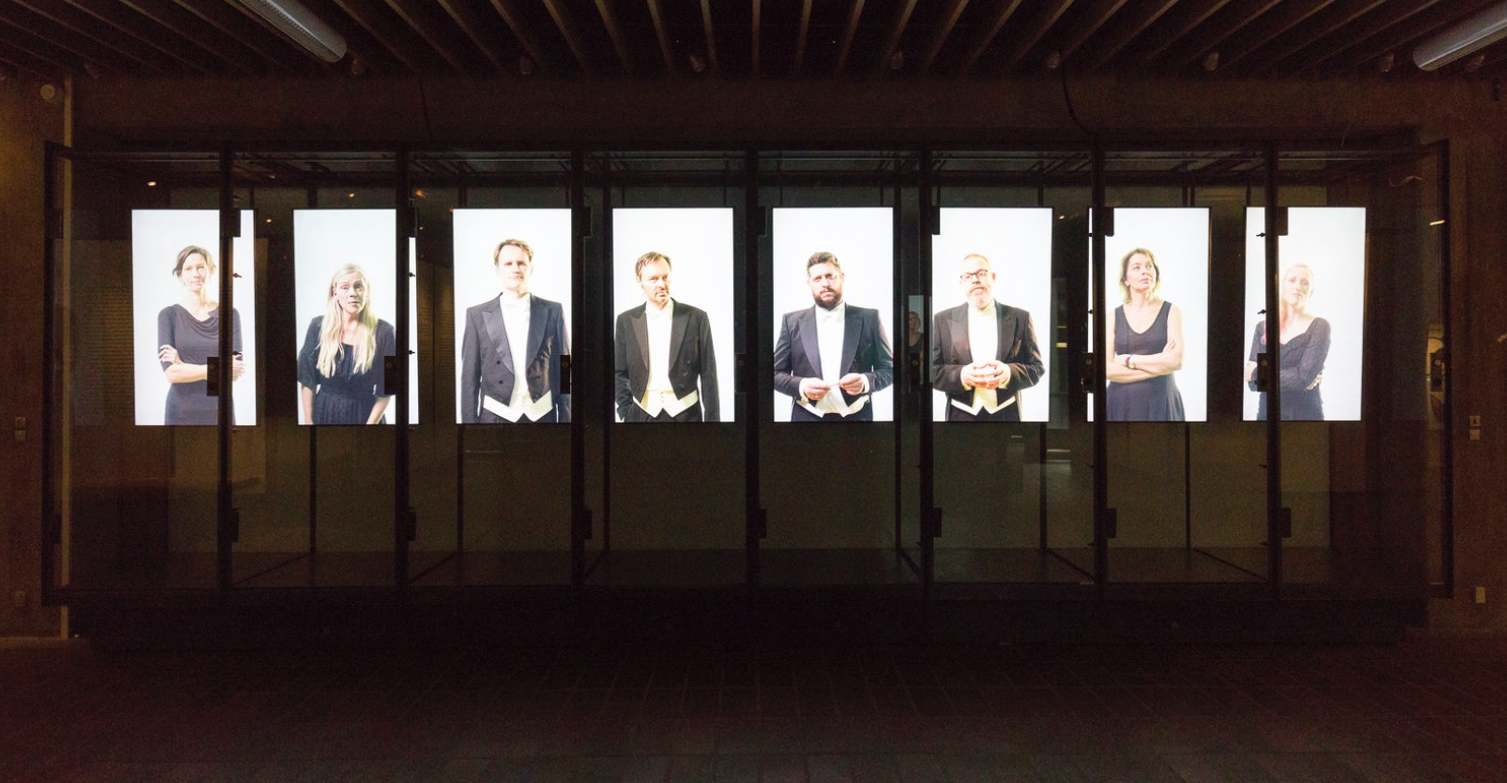
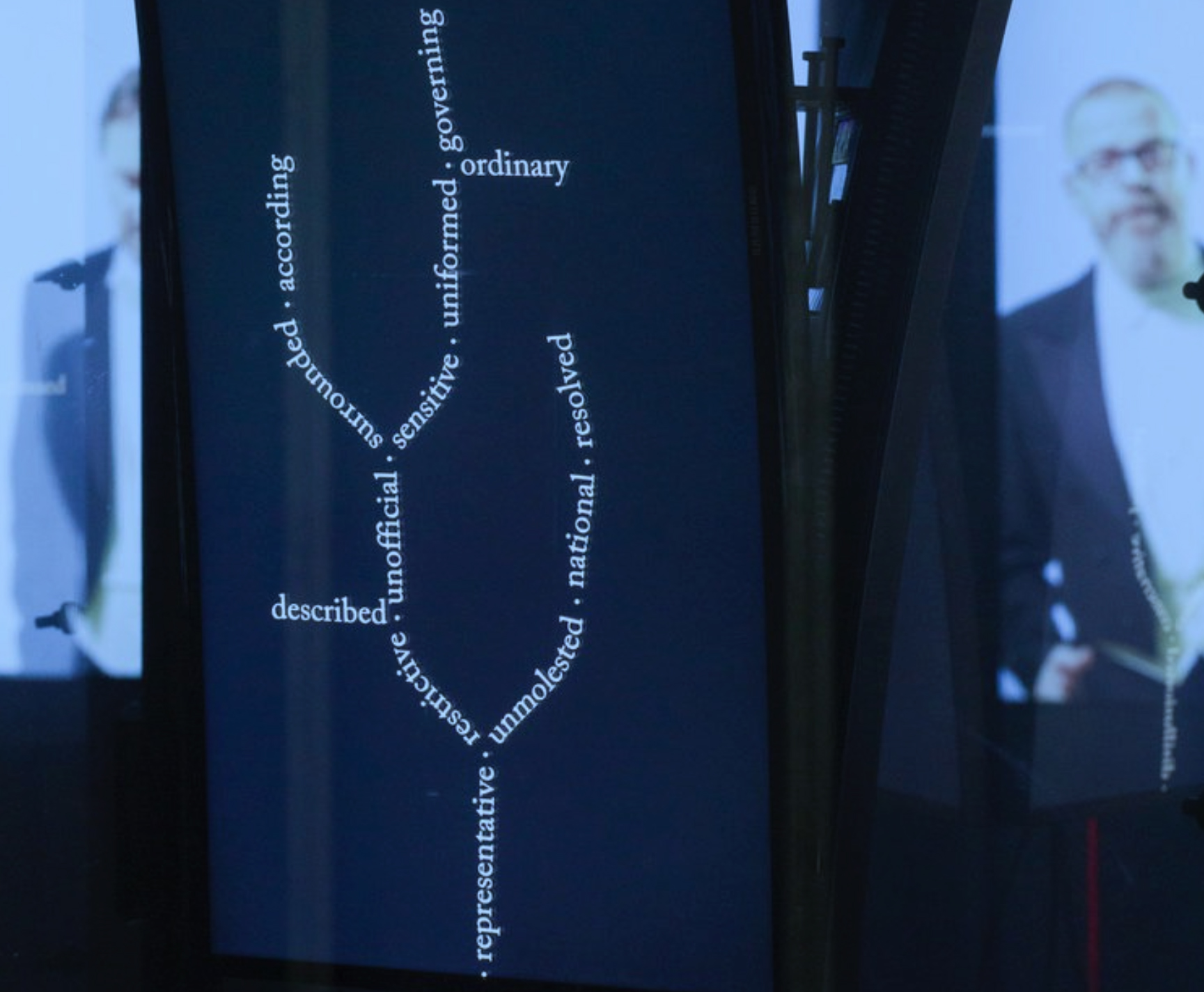
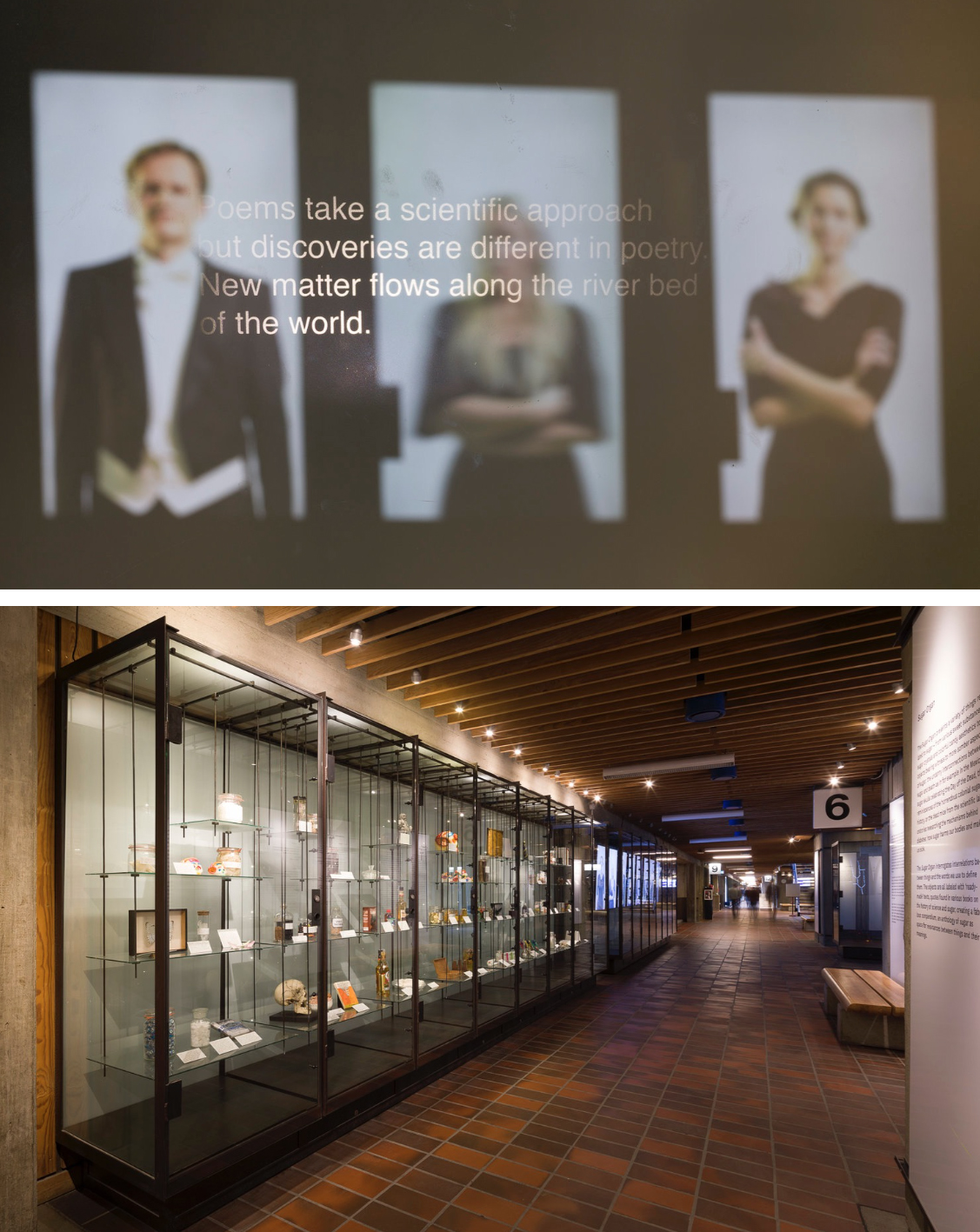
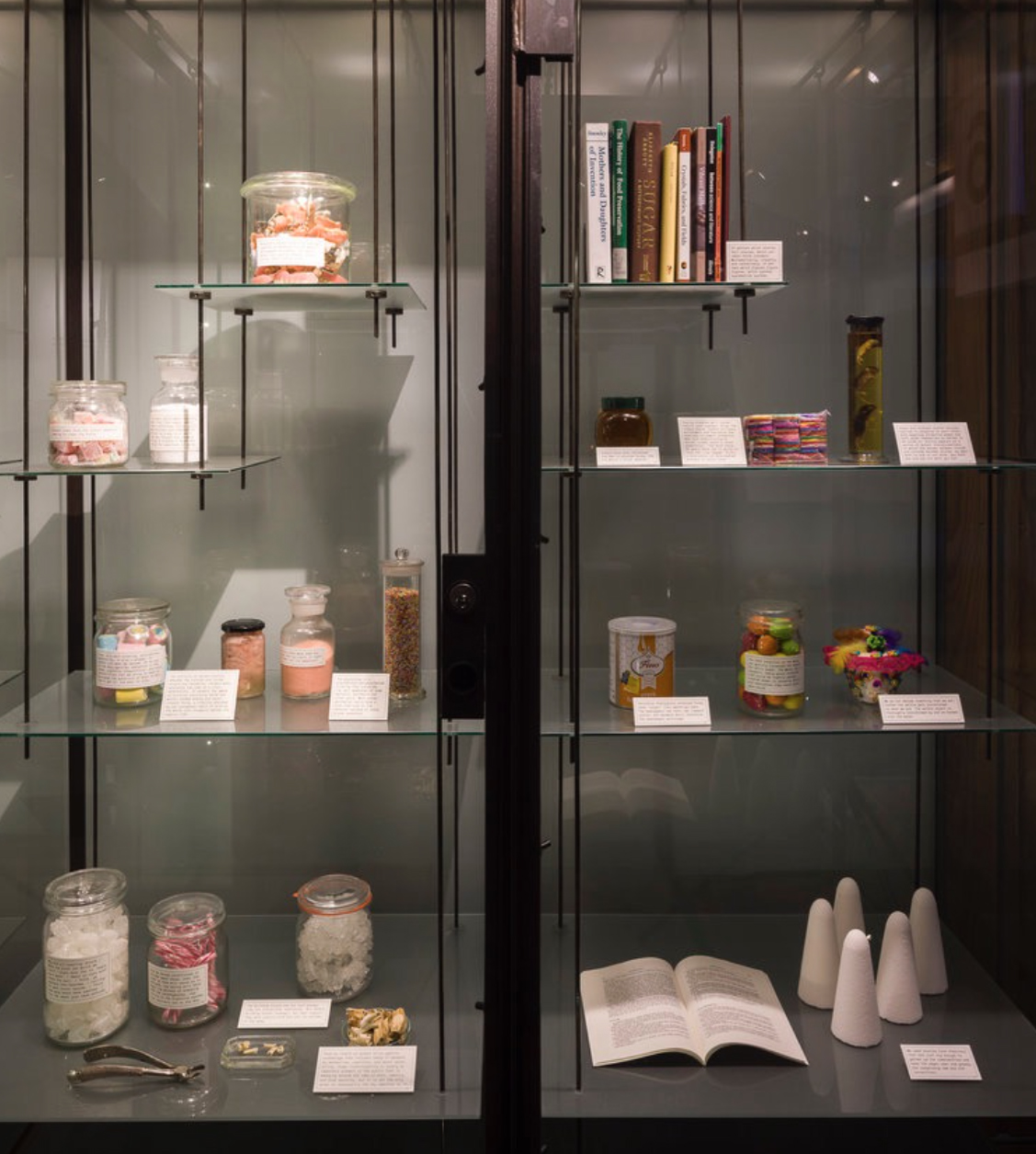 Photos: Torben Eskerod
Photos: Torben Eskerod
SUGAR TREES
S
Sugar Trees is a poetry machine, a virtual part of the cell, which writes living, arboreal poetry inspired by the process by which our bodies make the complex sugars that cover our cells. Much like what happens in the cell, the program responds to its environment – in this case, the latest headlines from The Guardian newspaper – building tree-like text structures based on the news of the day. These trees are sensitive, and pick up subtle
changes in the news – whether it is good, bad, happy or sad. The trees are a reflection of the world they are grown in, and consist solely of adjectives from the news articles, as the sugars can be described as that which specify and sophisticate inner processes – i.e. as adjectives of the body.
This work gives form to two key ideas often discussed in the corridors of the Faculty of Health and Medical Sciences: a) That sugars are the third language of life – with a vocabulary, grammar and use quite unique from DNA and proteins, and b) That sugars are found between the cell and its environment, and their language allows for a richness of expression, making them ideal communicators with the environment and its neighbours.
SUGAR CONTACT
Inspired by the idea of the metabolism as a signalling system within the body, the sugar cloud displays the tissue and inner workings of a poem. The poem Contact by Morten Søndergaard, the core text and poetic statement of the exhibition, is projected from within a cloud finding its own form, an image of the ultimate secret and mystery of life to poets and scientists alike.
The vitrine acts as an incubator for meaning, playing with the various metaphorical connections between information and clouds. The sugar encyclopedia informs us that the pairing of clouds and crystals are to be found on a variety of levels in nature such as in ice-crystals inside clouds. Sugar often comes in the form of crystals, in orderly arrangements of sucrose molecules. Perhaps a thought, a theory, a scientific proposition or a poem can be described as a pendular movement between cloudy sentiments and manifest crystallizations.
SUGAR ORGAN
The Sugar Organ presents a variety of things related to sugar – from various sweet substances, sugar crystals and colorful candy aesthetics to objects bearing witness to more somber aspects of sugar: the uncanny interconnections between sugar and death as in for example in the Mexican sugar skulls celebrating the Day of the Dead, the reminiscences of the horrendous colonial sugar history, or the dead mice from the scientific laboratories researching the mechanisms behind diabetes: how sugar harms our bodies and makes us sick.
Sugar Organ interrogates interrelations between things and the words we use to define them. The objects are all labeled with ‘readymade’ texts, quotes found in various books on the history of science and sugar, creating a fabulous compendium, an anthology of sugar as space for resonances between things and their meanings.
The Sugar Organ deploys the metaphor of preservation in its authoring of alternative histories about and surrounding sugar. Methods of preservation – often deploying sugar in its various processes – have marked major cultural innovations and secured the survival of human civilization. Such crucial preservative inventions have most likely been done by anonymous women in cultures all over the world. These are stories largely untold in a society preoccupied with inventions of tools for conquering wars, leaving unnoticed how a majority of medical and scientific innovations – such as the invention of antibiotics – have their roots in indigenous knowledge of nurture and nourishments; in the ancient sciences of the kitchen, a sphere traditionally inhabited by women. Mixing the laboratory and the kitchen, the Sugar Organ pays homage to the myriad and multitudes of forgotten histories, and attempts to redo and preserve other kinds of stories. SUGAR CHOIR
The Sugar Choir makes science digestible and delicious, composing sweet music from scientific research texts from The Copenhagen Center for Glycomics and the Novo Nordisk Foundation for Basic Metabolic Research, respectively. In Sugar Choir , the two research teams alternately compete in order to make themselves heard, and harmonize their research results in a sensory, strange and seductive composition.
CONTACT
Yes: Poetry is research.
A way of dealing
with what is most important
the fundamentals.
Poems take a scientific approach
but discoveries are different in poetry. New matter flows along the river bed
of the world.
Language moves on and we
must write new poems.
What poetry says
remains the same but we need to say it in different ways. The world
must be reformulated.
– Morten Søndergaard
COLOPHON
Idea: Dean Ulla Wewer and Museum Director Ken Arnold
Conceptual development, curating and production: Morten Søndergaard in collaboration with Laboratory for Aesthetics and Ecology
Project coordination: Bente Vinge Pedersen (Medical Museion) and Caroline Arentoft (The Faculty of Health and Medical Sciences, Copenhagen University)
Exhibition producers: Medical Museion and Faculty of Health and Medical Sciences, University of Copenhagen
Graphic design: Fuchs Borst
Sugar Choir
Concept: Morten Søndergaard in collaboration with Bo Lundby-Jæger and Laboratory for Aesthetics and Ecology
Composer: Bo Lundby-Jæger
Choir: Mariann Amdisen, Cille Ebling, Nina Clausen, Ole Jegindø Norup, Lars Bo Ravnbak, Rasmus Ruge, Torleif Steinstø, Matilde Wallevik Production: Obscura Vertigo
Sugar Trees
Concept: Morten Søndergaard in collaboration with Hiren Jitendra Joshi, Hans W. Wandall, Obscura Vertigo and Laboratory for Aesthetics and Ecology
Programming and production: Obscura Vertigo
Sugar Contact
Concept: Morten Søndergaard in collaboration with Rasmus Bæk and Laboratory for Aesthetics and Ecology
Production: Rasmus Bæk
Sugar Organ
Concept and production: Morten Søndergaard and Laboratory for Aesthetics and Ecology
Morten Søndergaard and Laboratory for Aesthetics and Ecology owe the following people tremendous thanks for offering their time, help and knowledge to the exhibition:
Henrik Clausen, Hiren Jitendra Joshi, Hans W. Wandall - Copenhagen Center for Glycomics
Thue W. Schwartz, Thi Ai Diep - The Novo Nordisk Foundation Center for Basic Metabolic Research
Nanna Gerdes, Niels Christian Bech Vilstrup - Medical Museion
The exhibition has become possible through generous support from:
NOVO NORDISK FONDEN
The Sugar Choir has been supported by:
THE DANISH ARTS FOUNDATION
APOTEK
ORDAPOTEKET
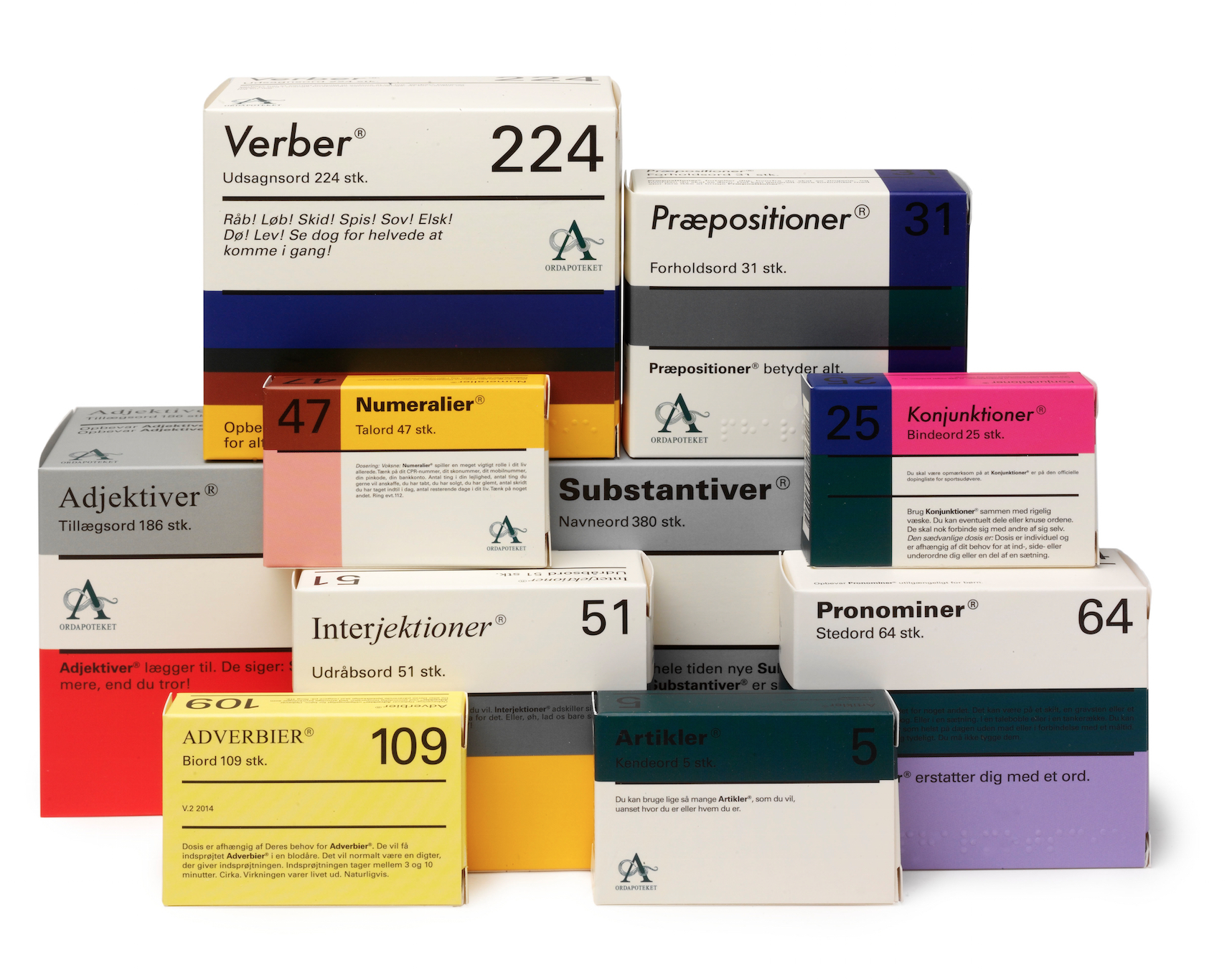 Hvis du mangler Interjektioner® eller Substantiver® i dit liv, eller er du lidt nede på Adjektiver®, eller har du underskud af Adverbier® så erder hjælp at hente.
Hvis du mangler Interjektioner® eller Substantiver® i dit liv, eller er du lidt nede på Adjektiver®, eller har du underskud af Adverbier® så erder hjælp at hente.
Ordapoteket forhandles af Galleri Tom Christoffersen
Ordapoteket er et værk der kombinerer medicin og grammatik. Det består af ti sproglige medicinæsker, en for hver af de ti ordklasser. Æskernes størrelse varierer i forhold til ordklassernes størrelse.
Inde i de ti forskellige medicinæsker ligger der indlægssedler, en for hver ordklasse. På Ordapotekets indlægssedler kan man læse om bivirkninger, overdosering og anvendelse af den enkelte ordklasse. Kan man bruge Præpositioner® hvis man er gravid? Hvad er bivirkningerne ved Artikler®. Løber Verber® over i modermælken hvis man ammer? Hvor opbevarer man Numeralier®?
Ordapoteket er oversat til 10 sprog.
Lyt til en samtale imellem Benjamin Koppel og Morten Søndergaard om Ordapoteket:
LYT HER PÅ P1
Apoteket er lavet i forbindelse med en udstilling om sprog og sprogets love. Den grafiske udforming af medicinæskerne og apoteket har Christian Ramsø / WeArePopular stået for.
